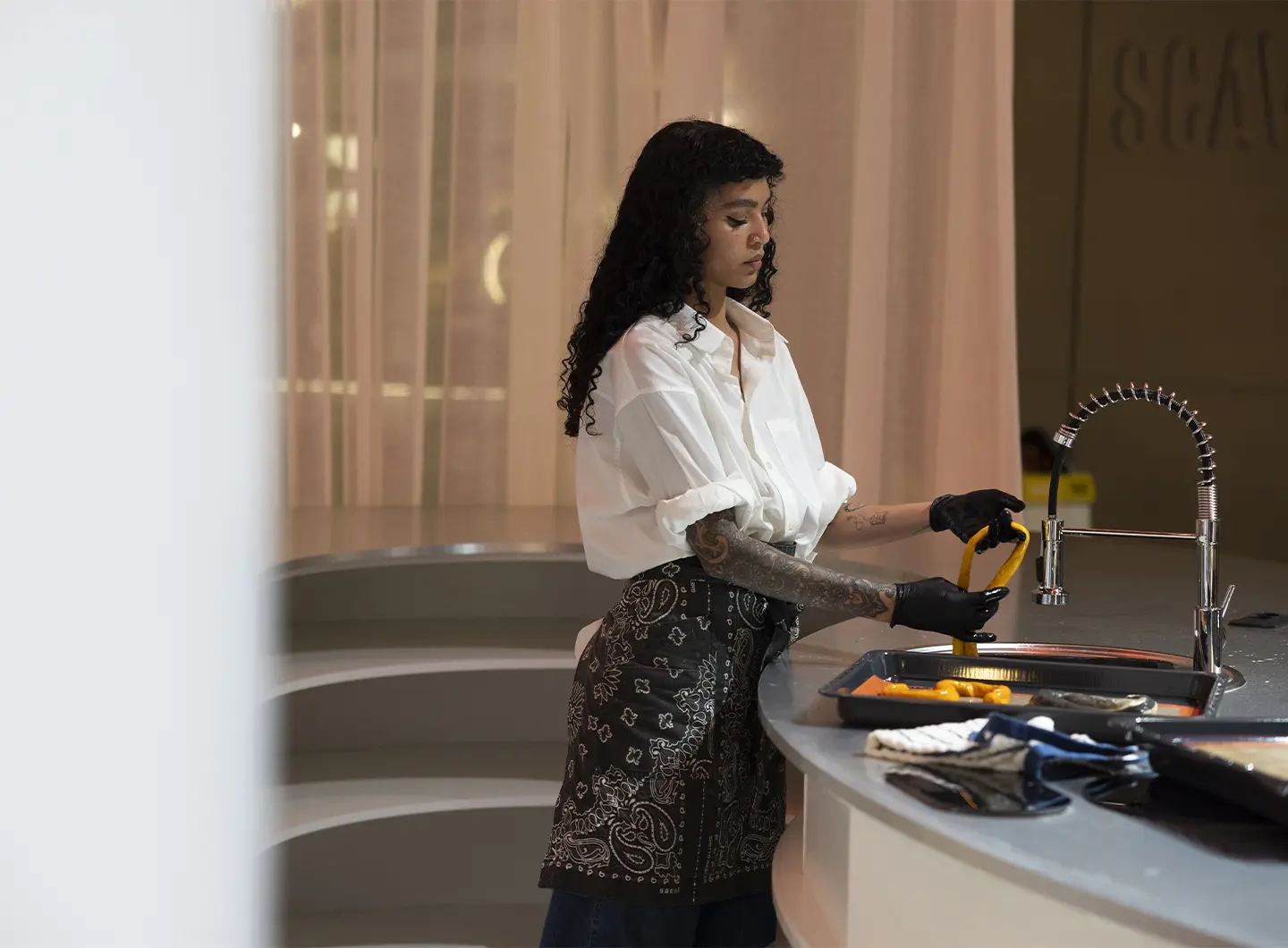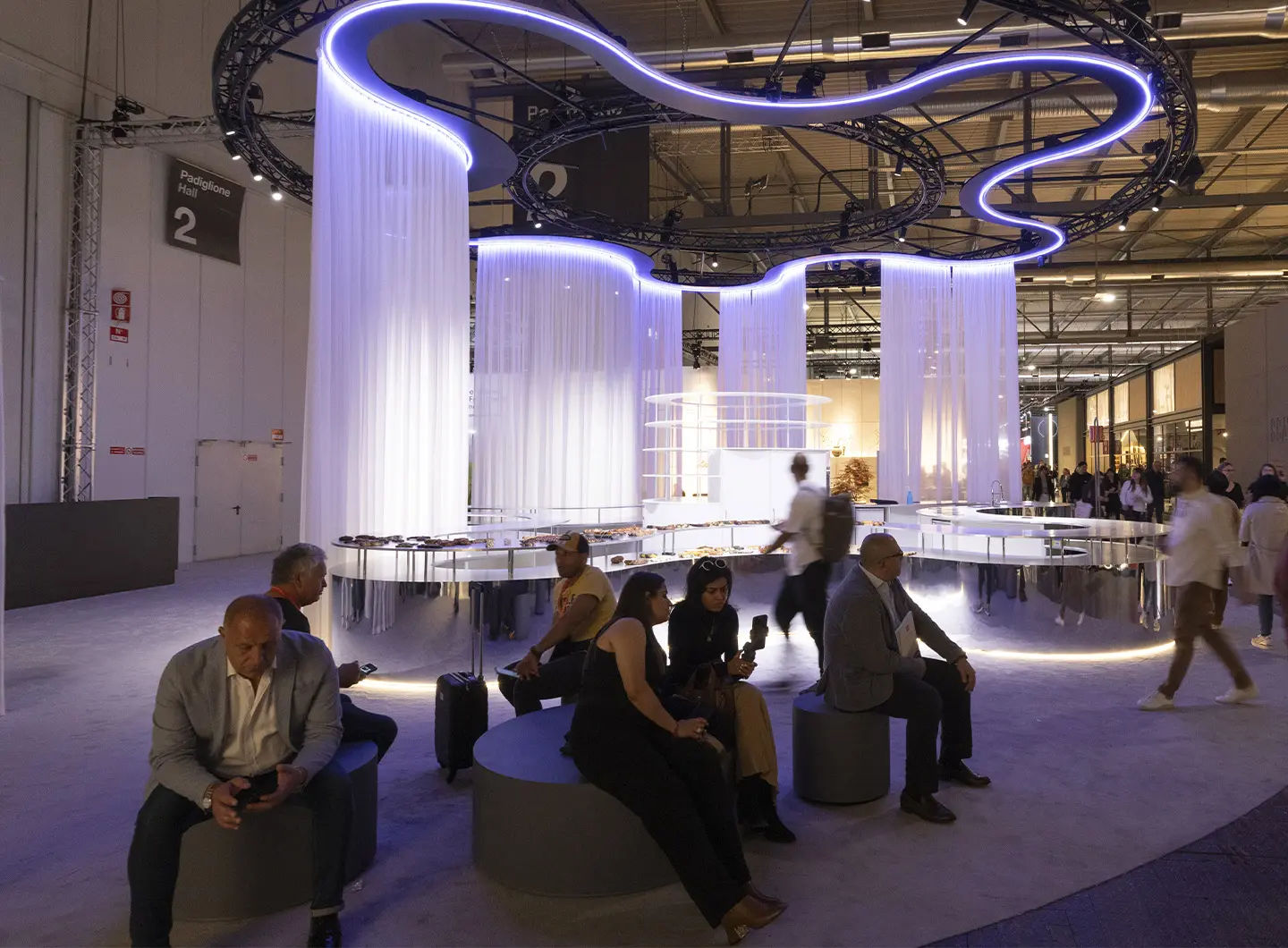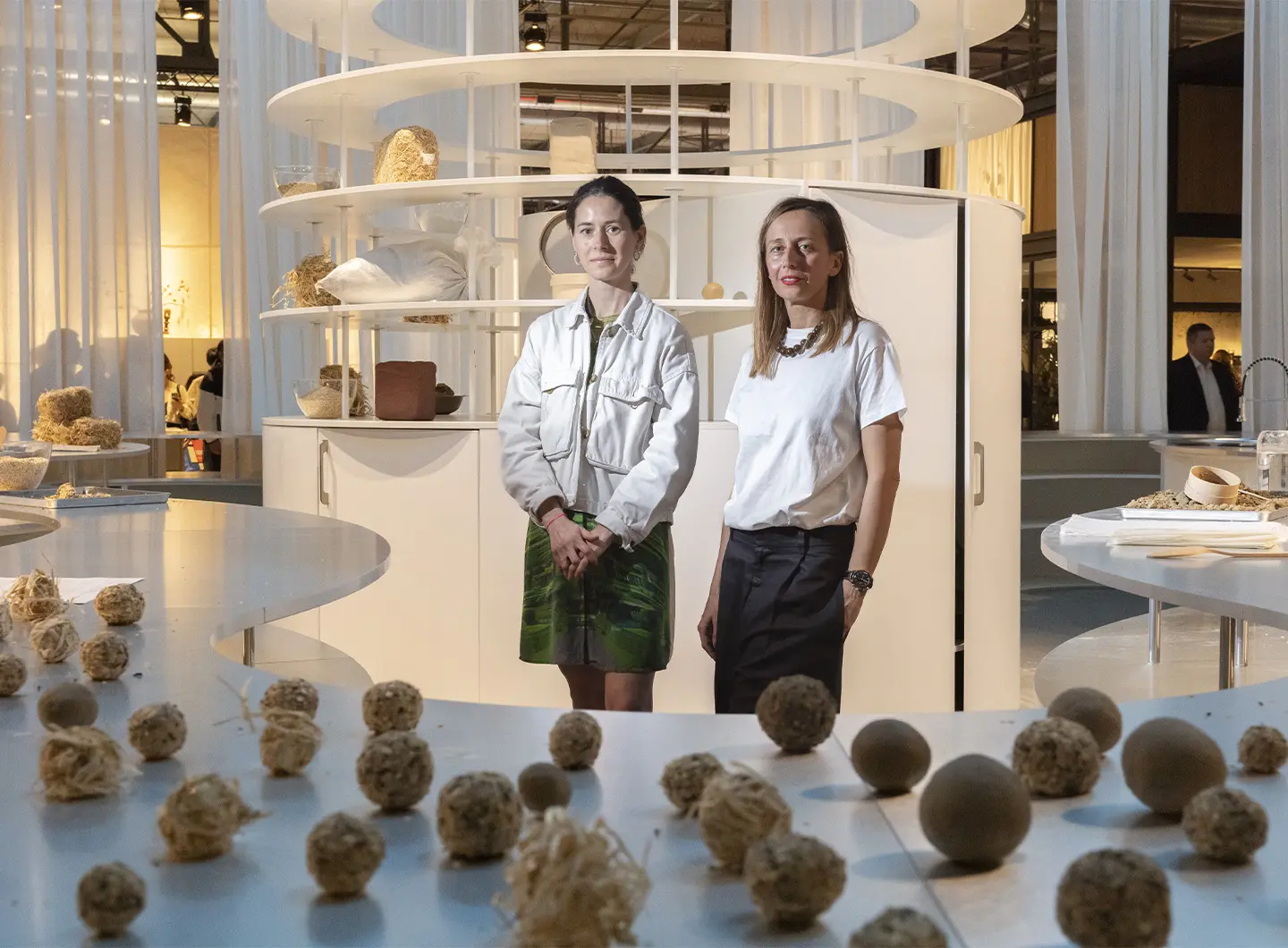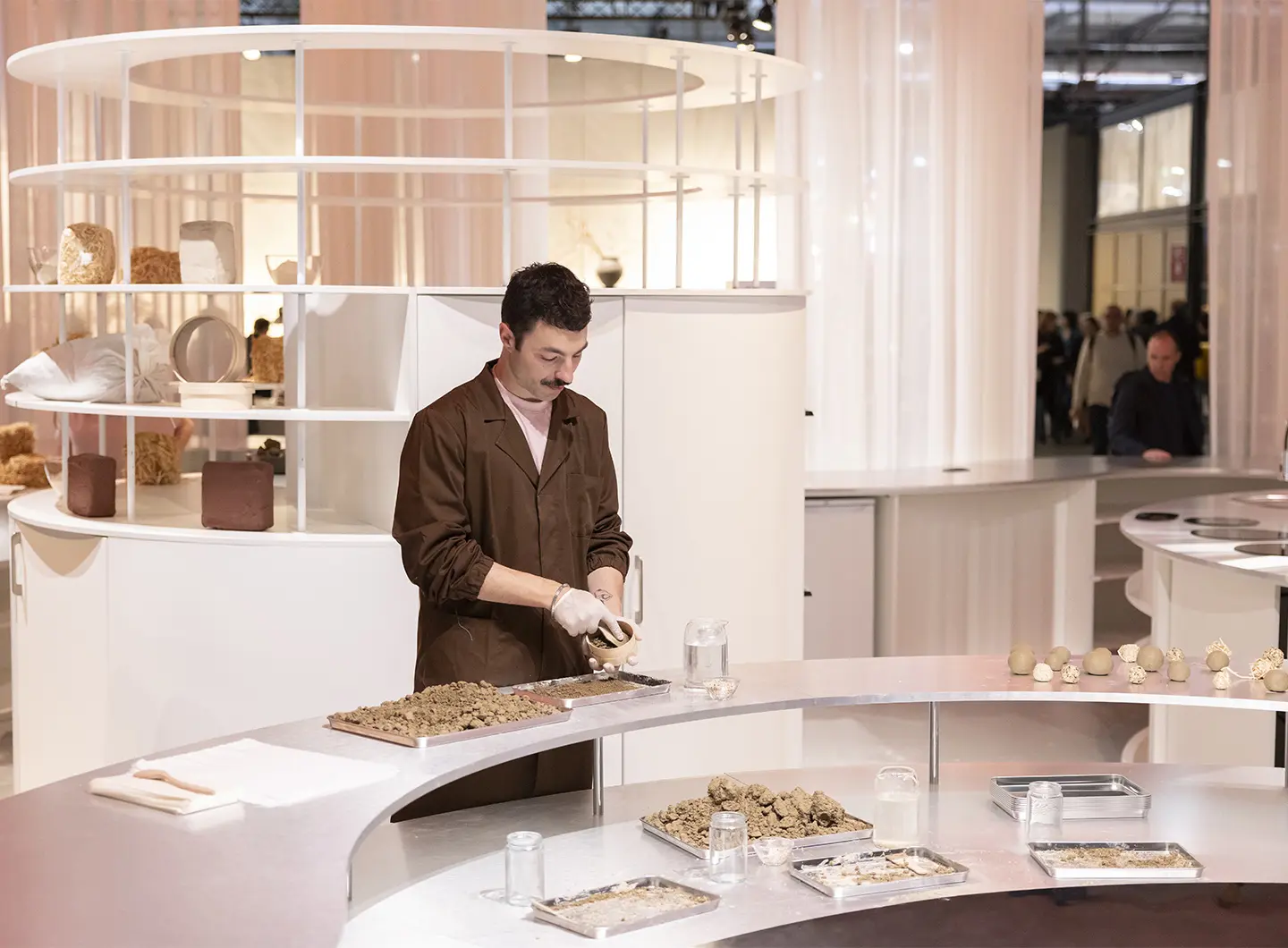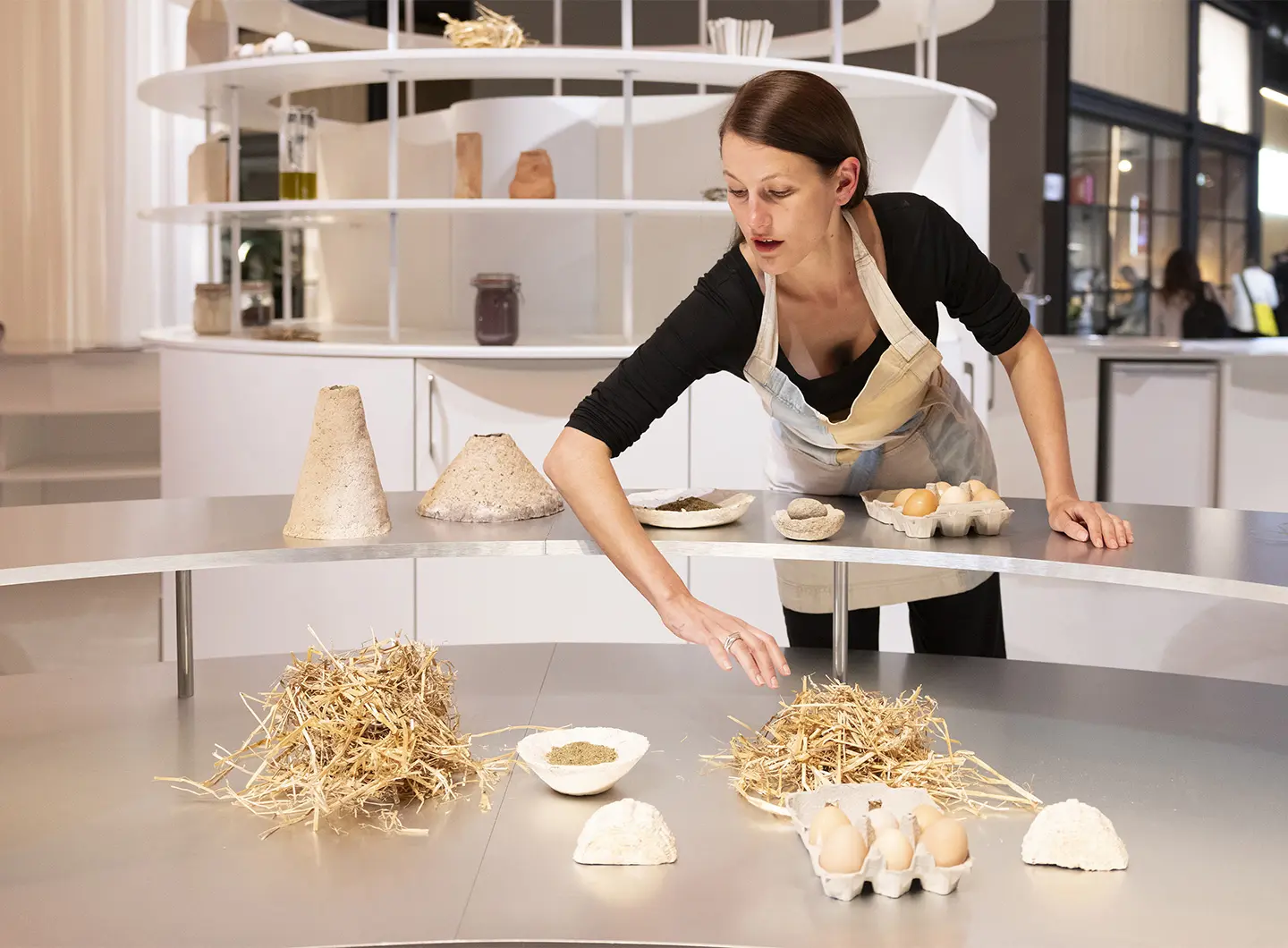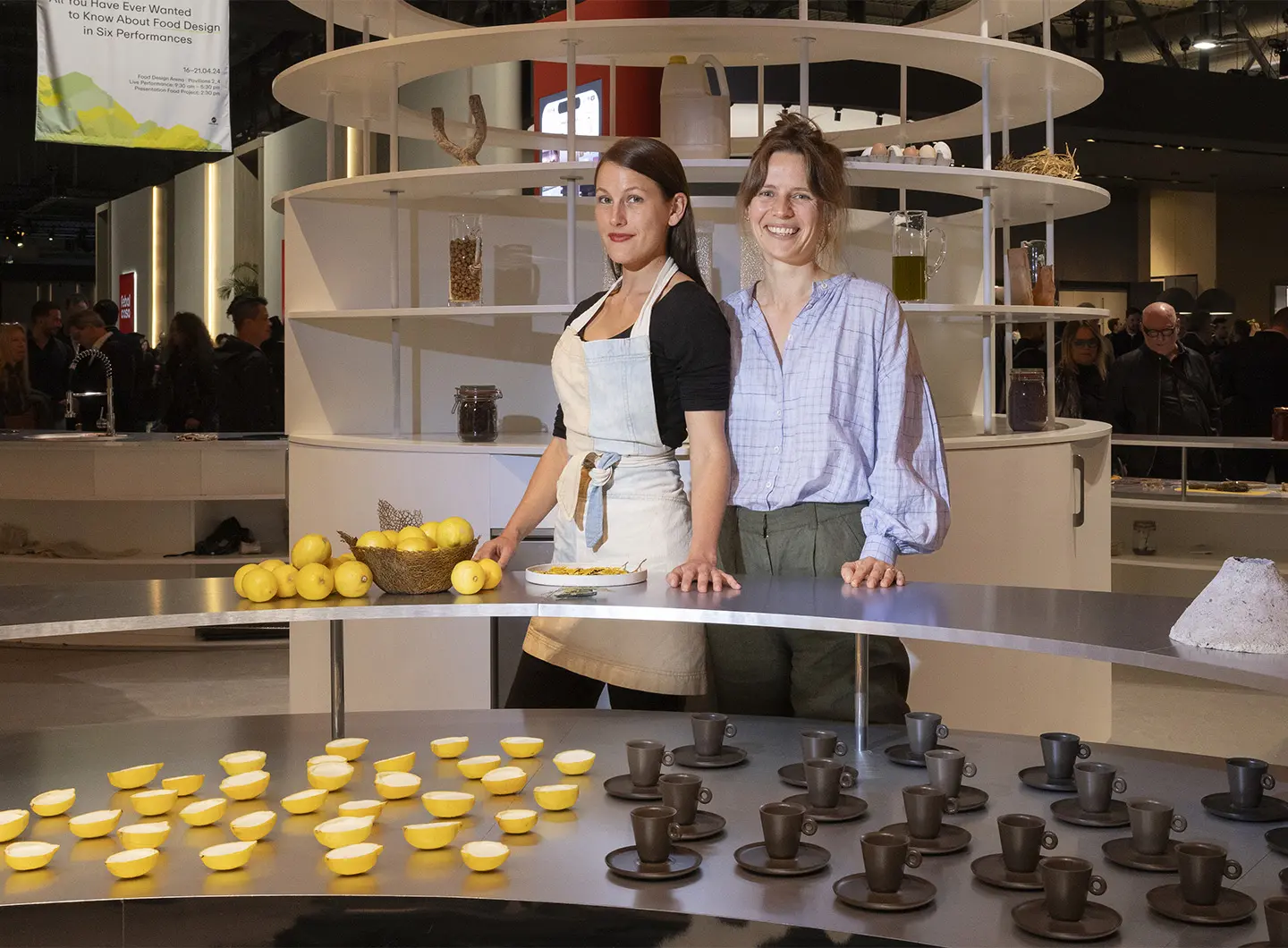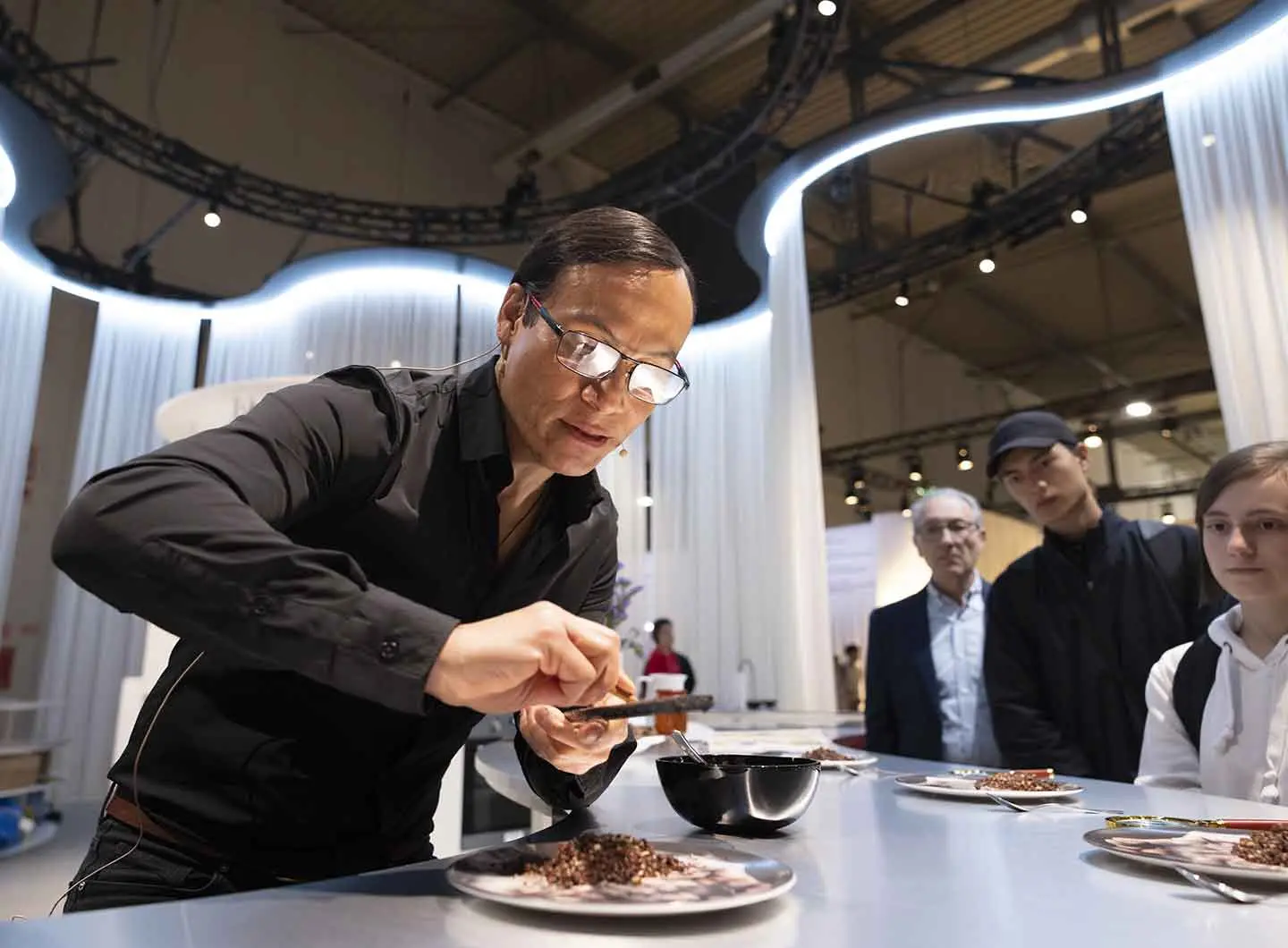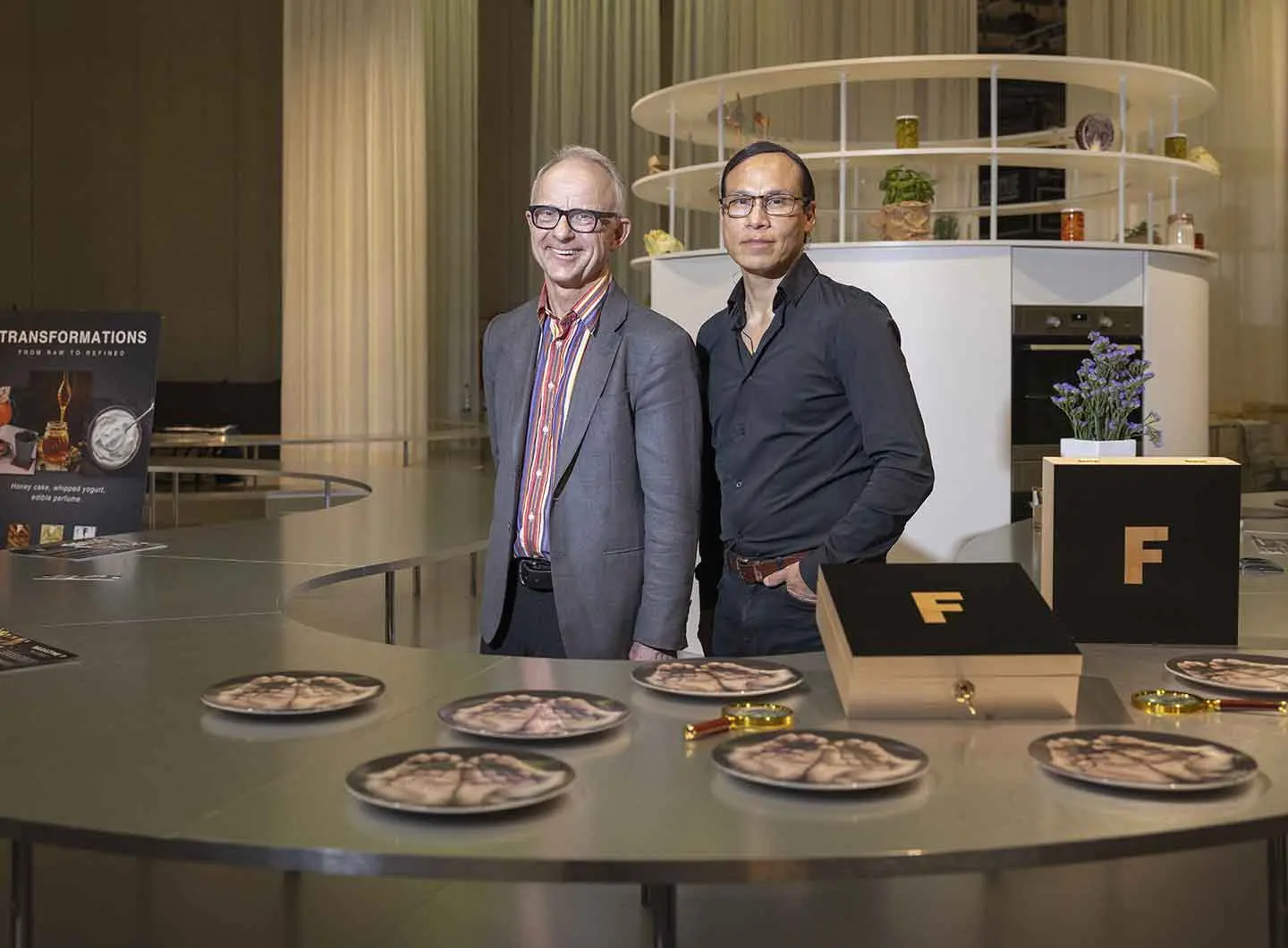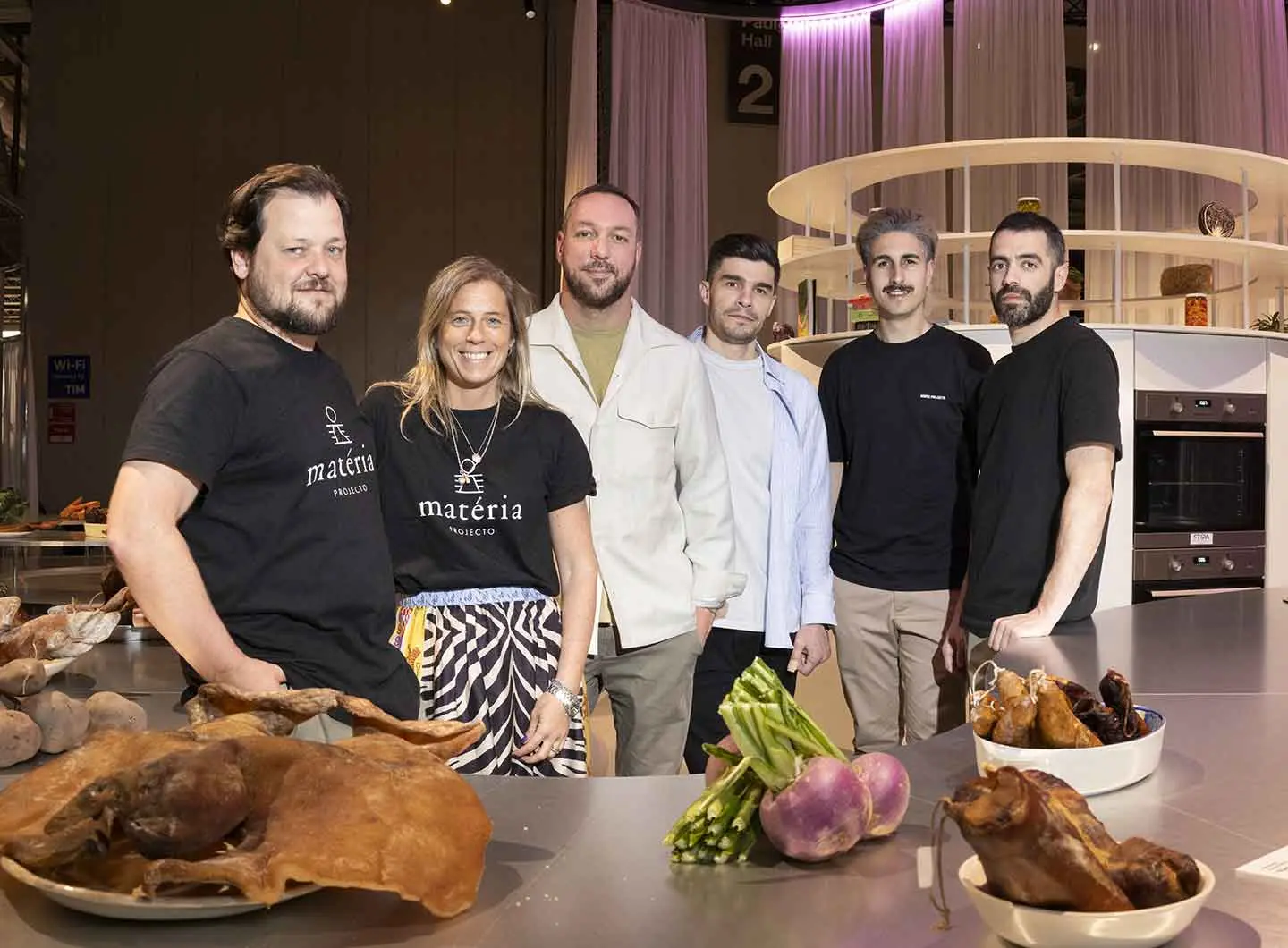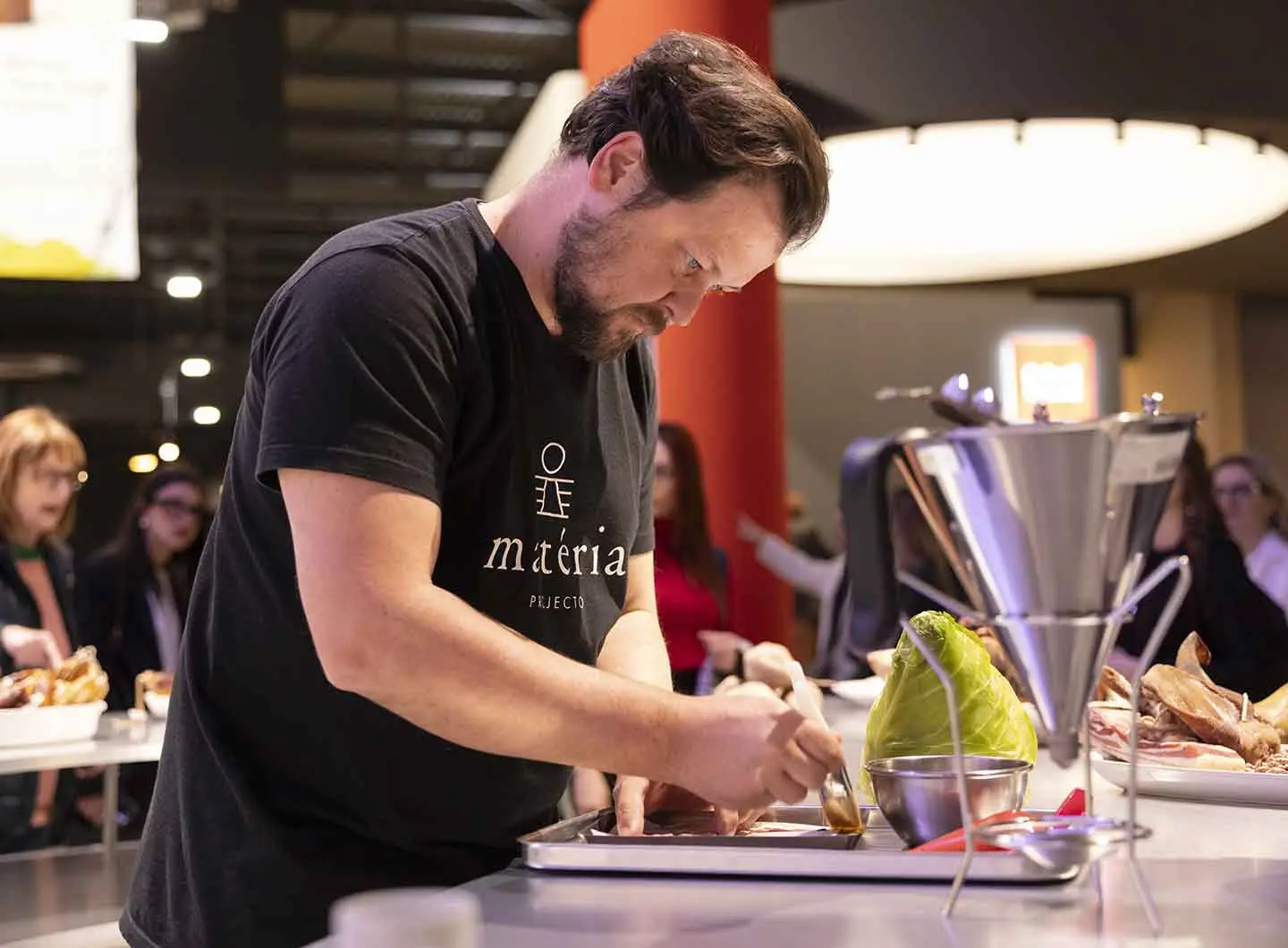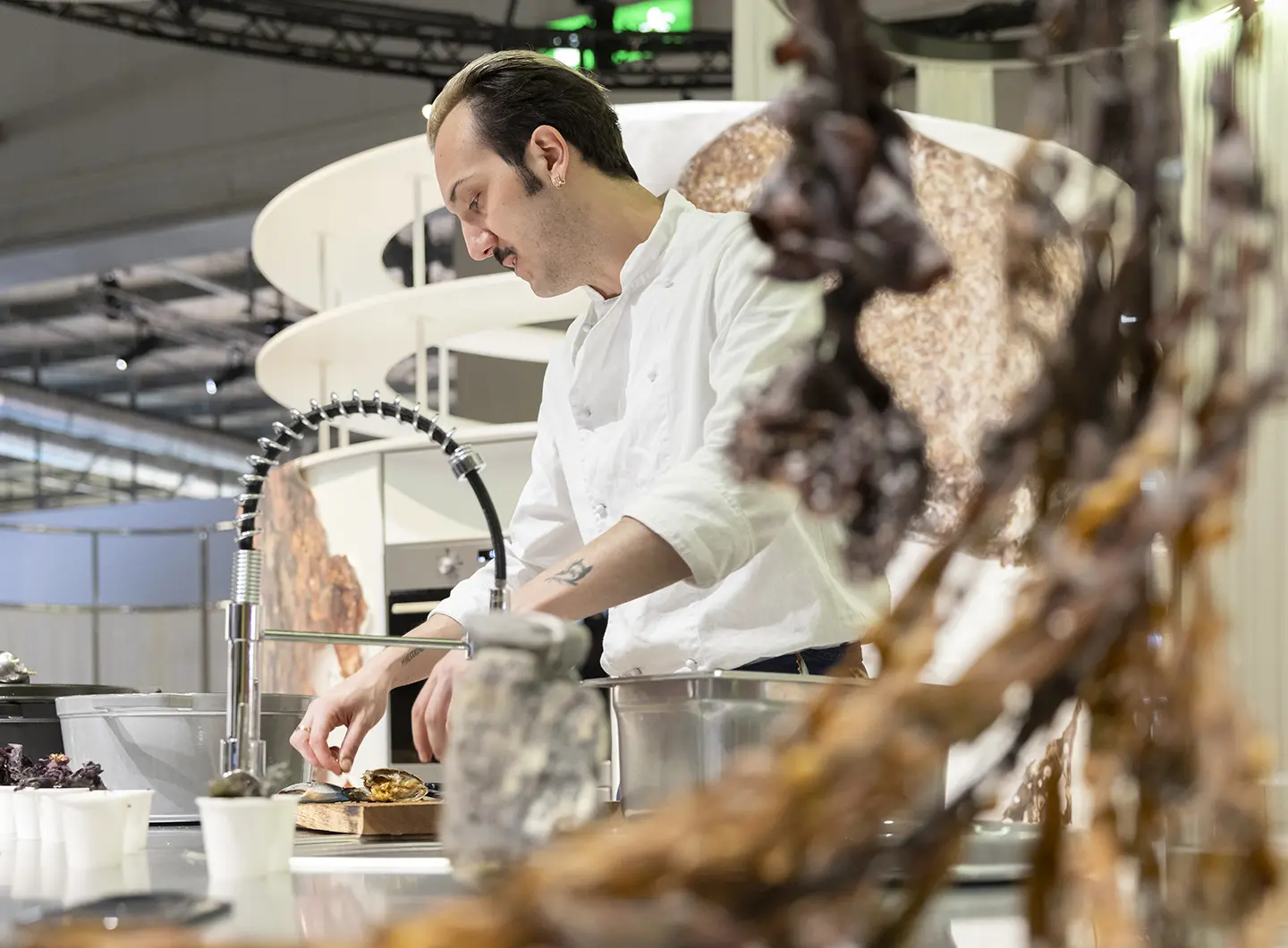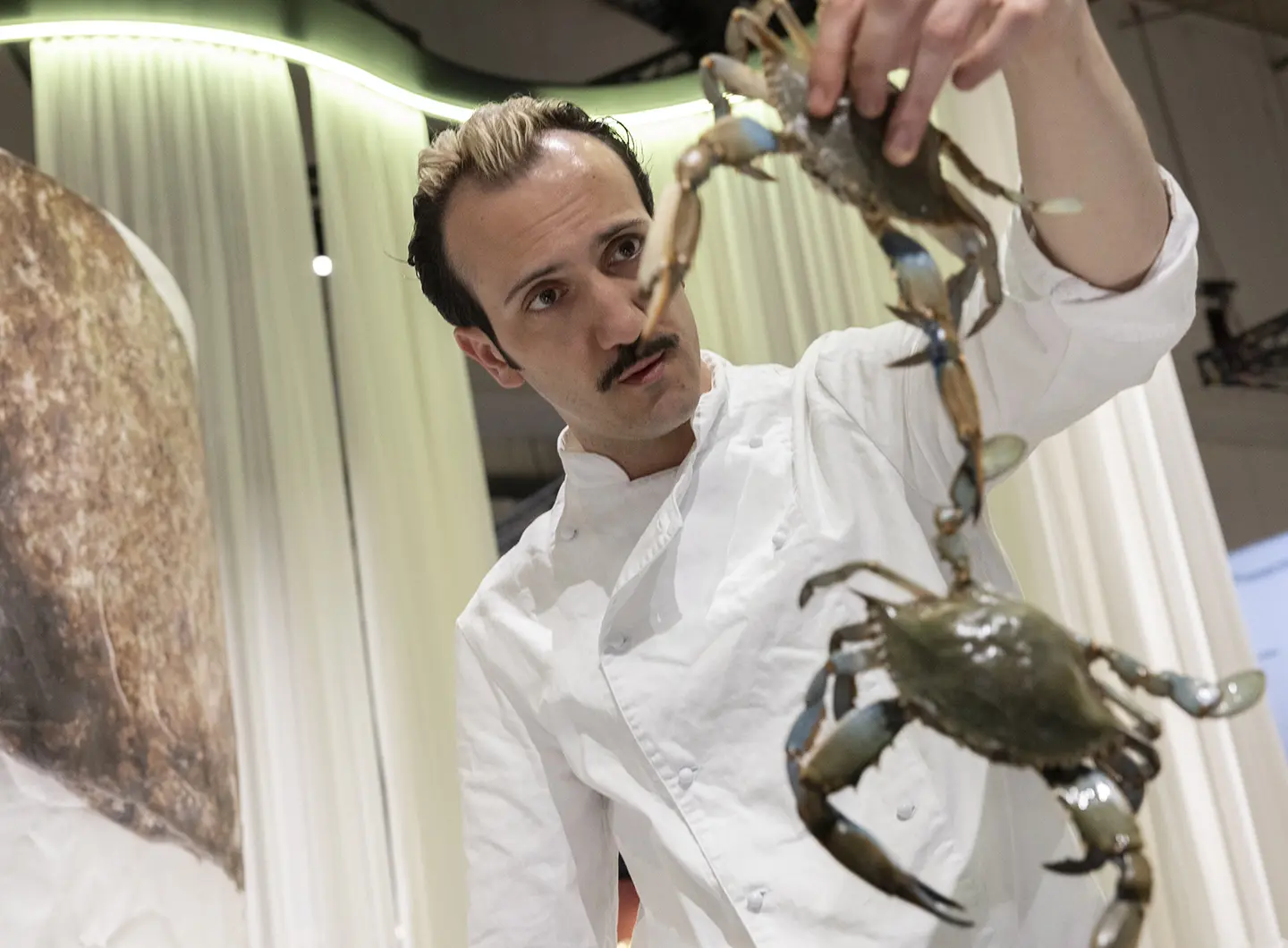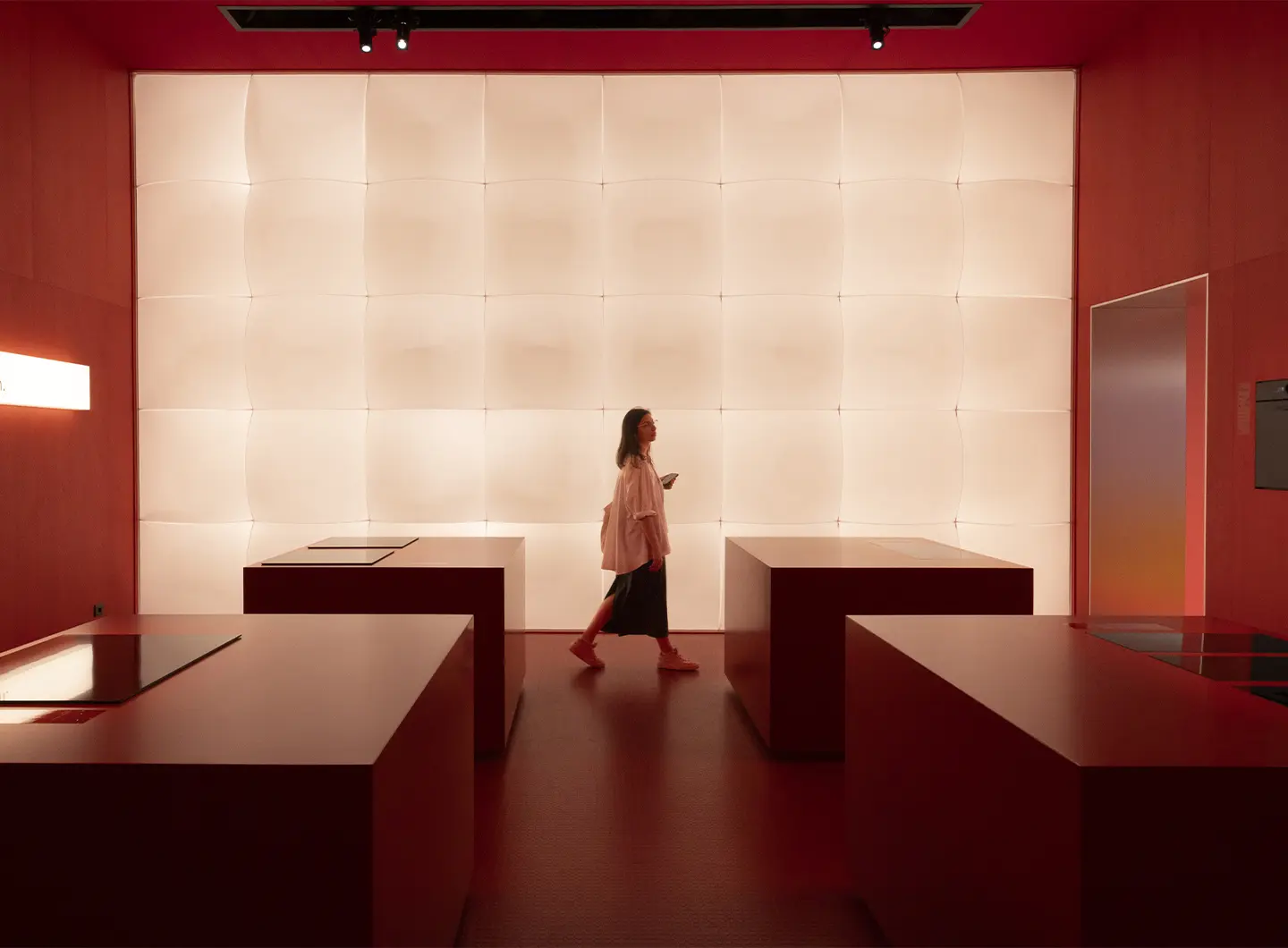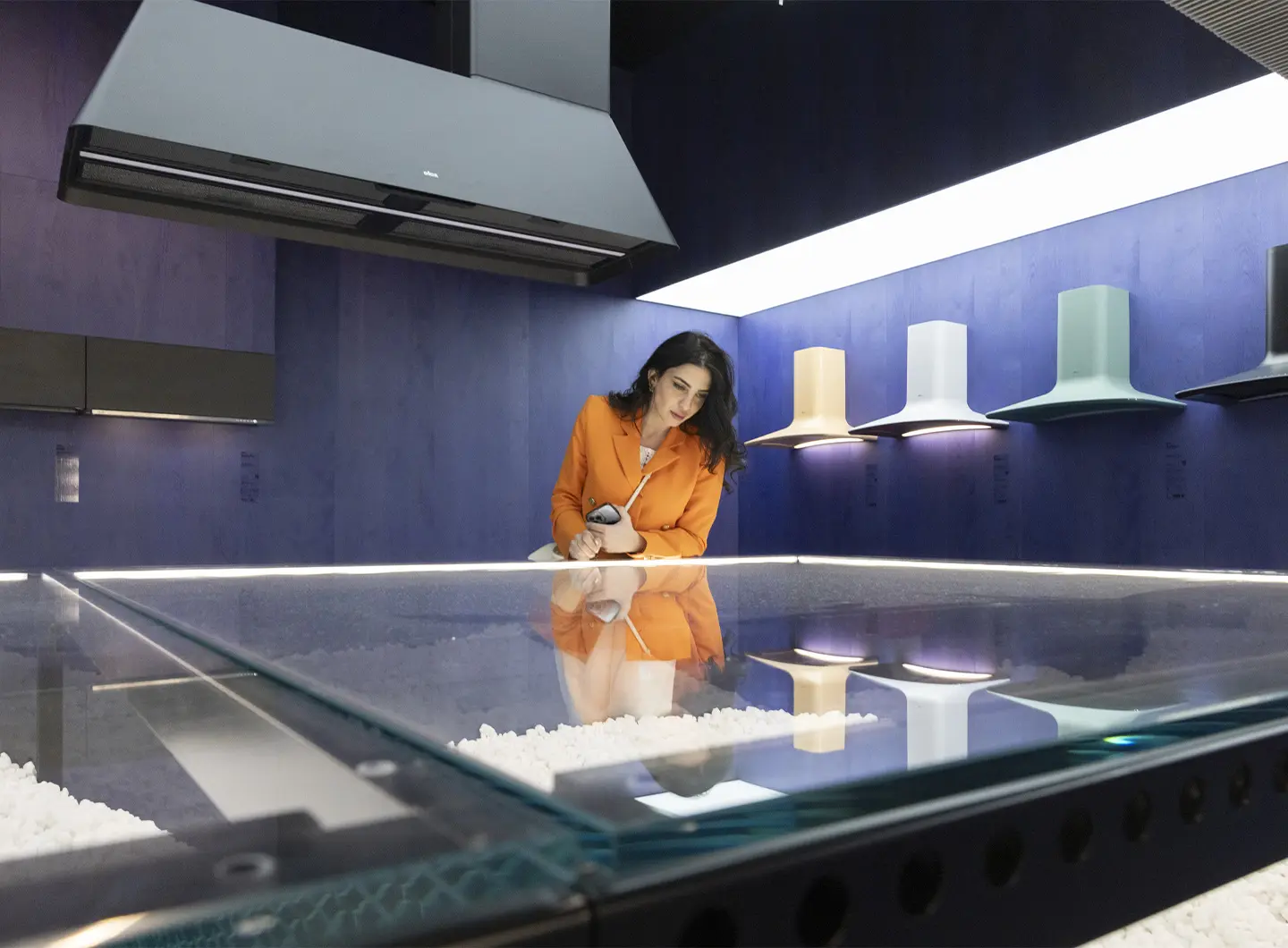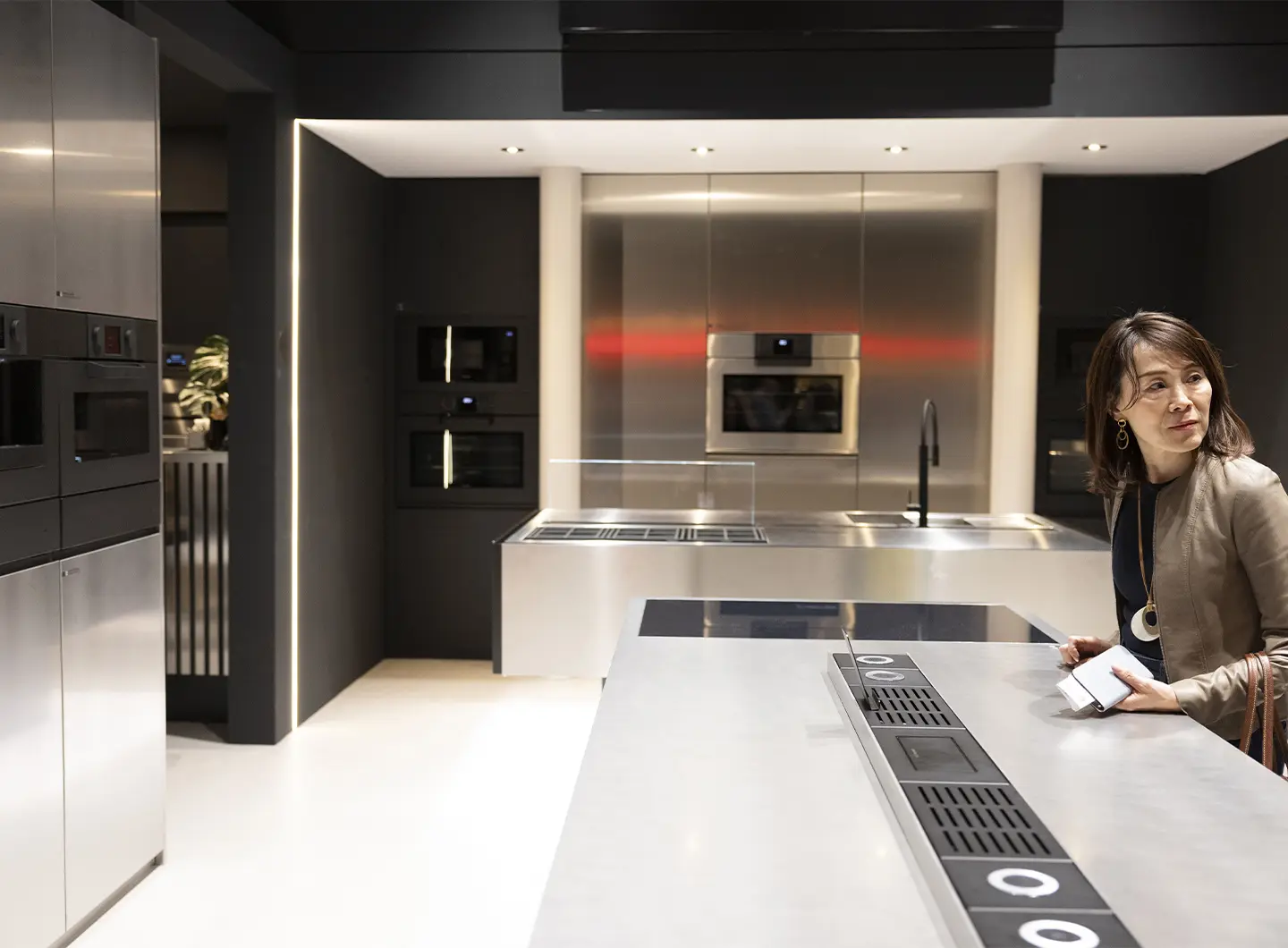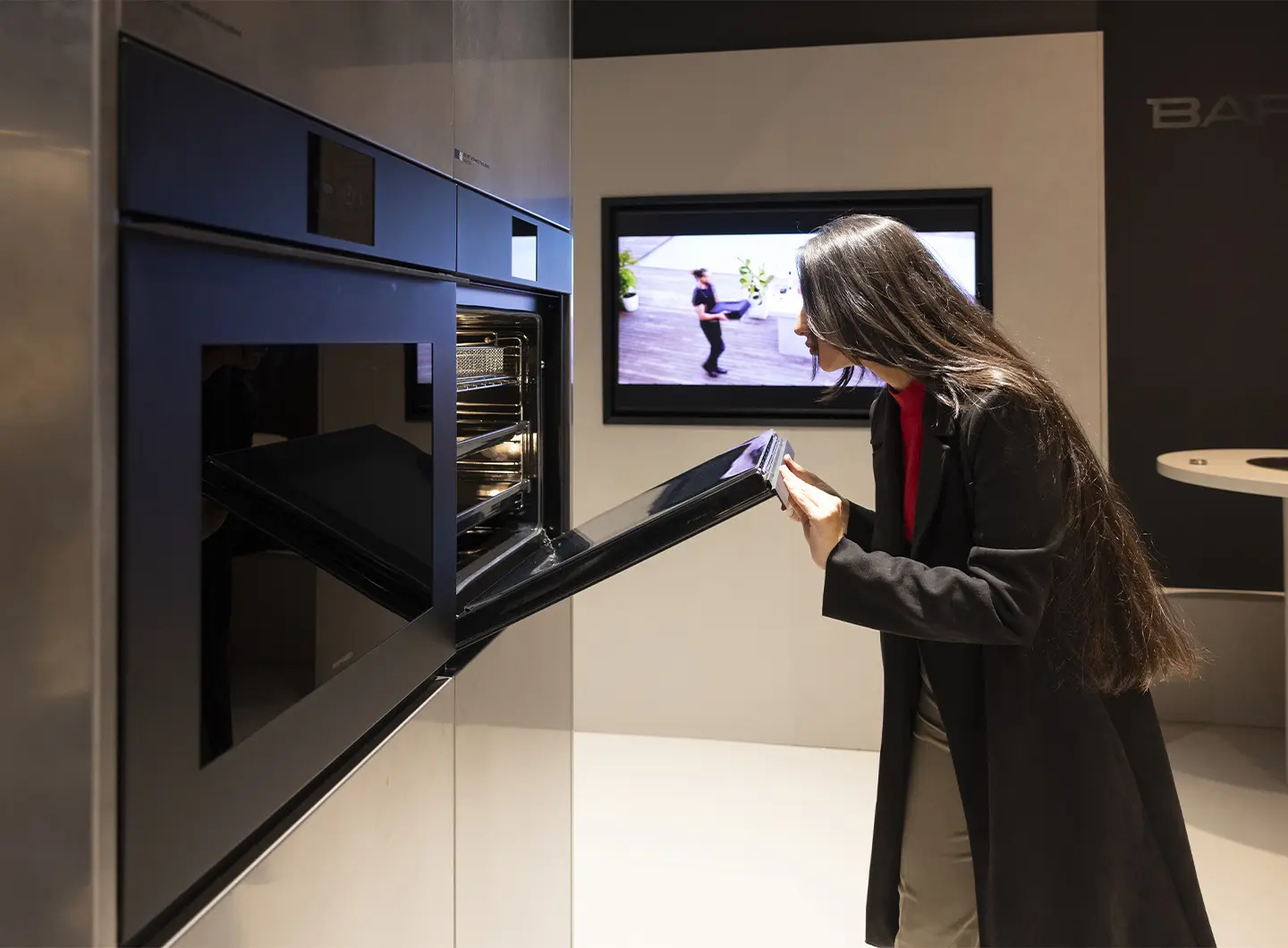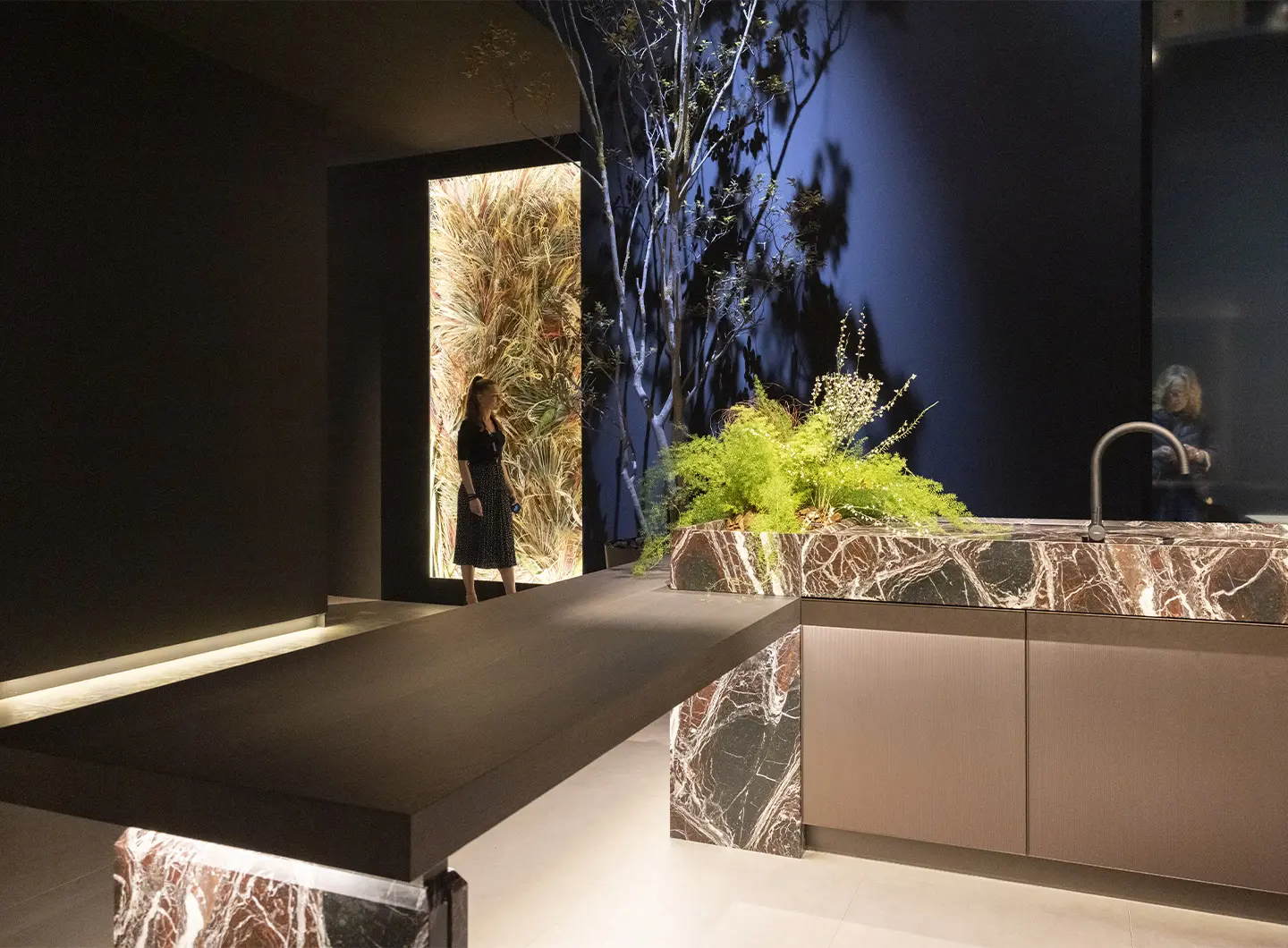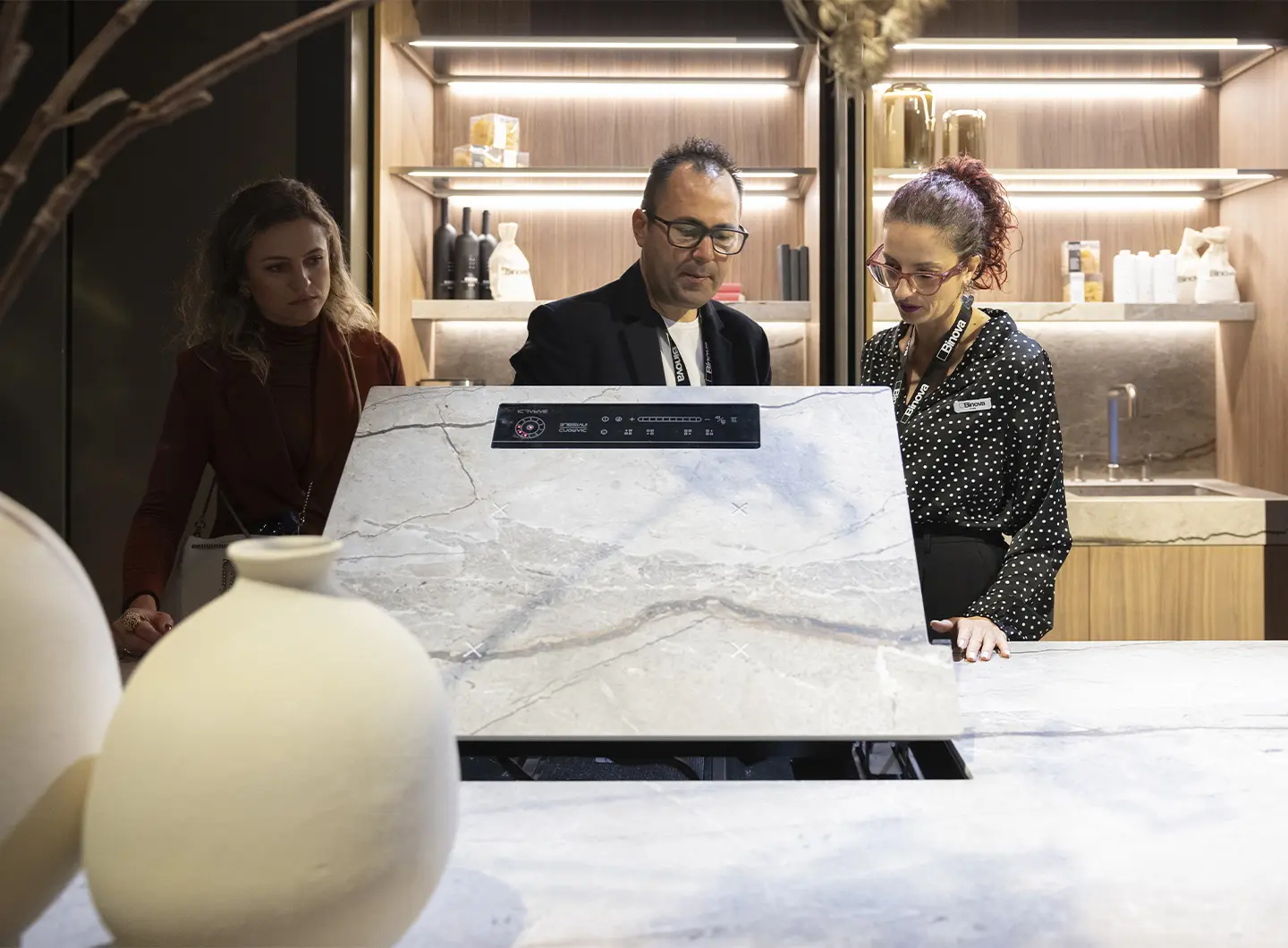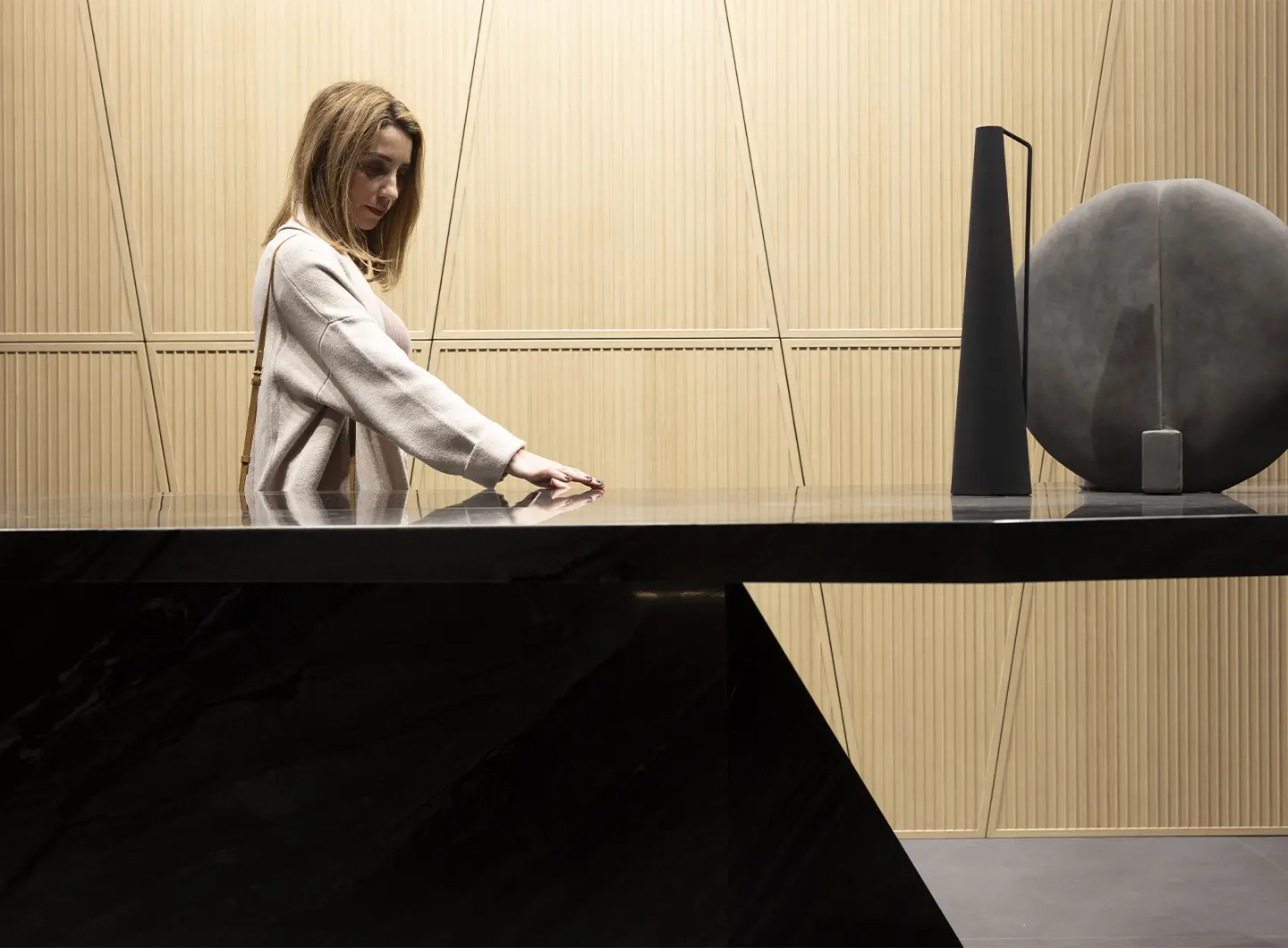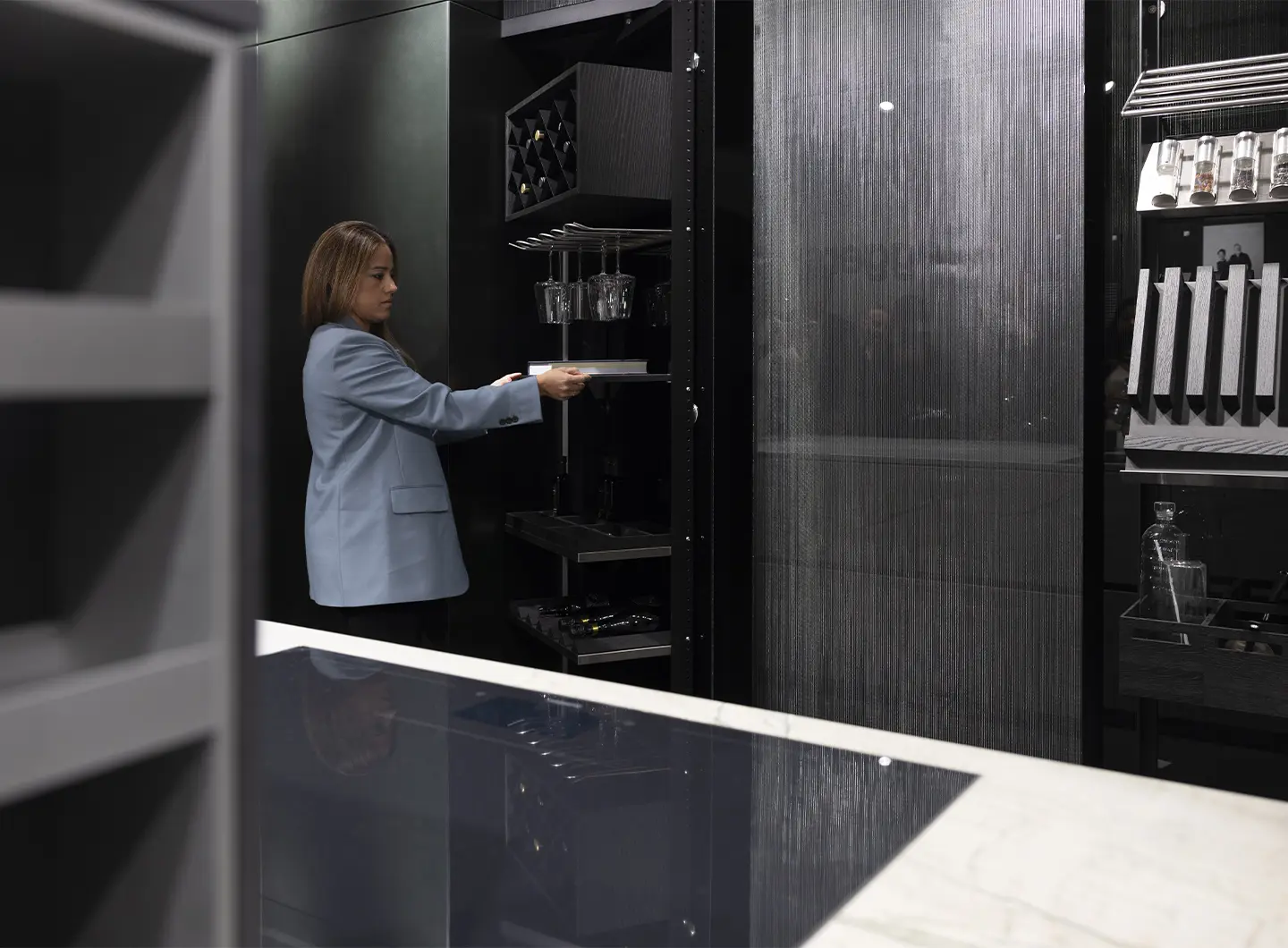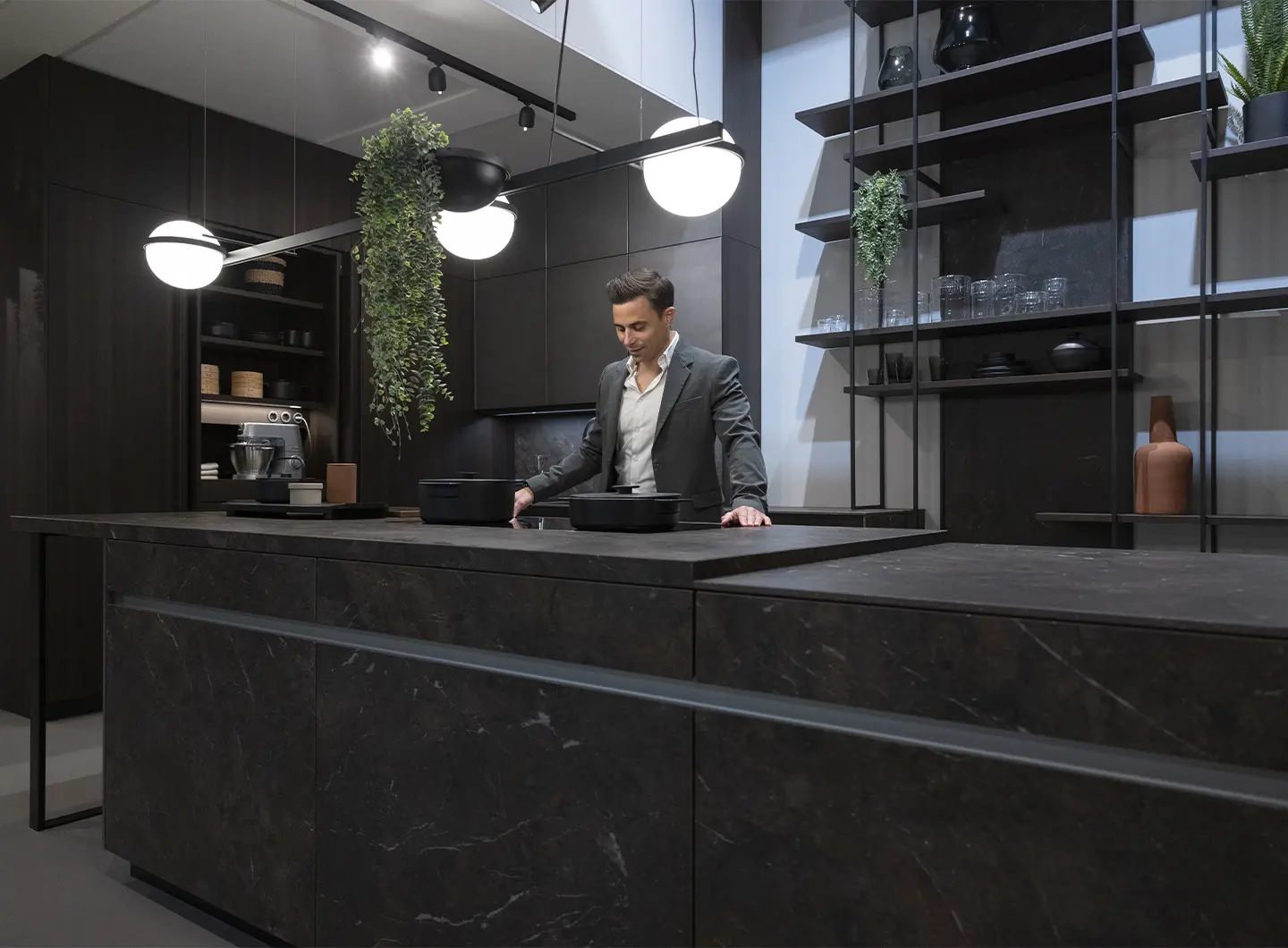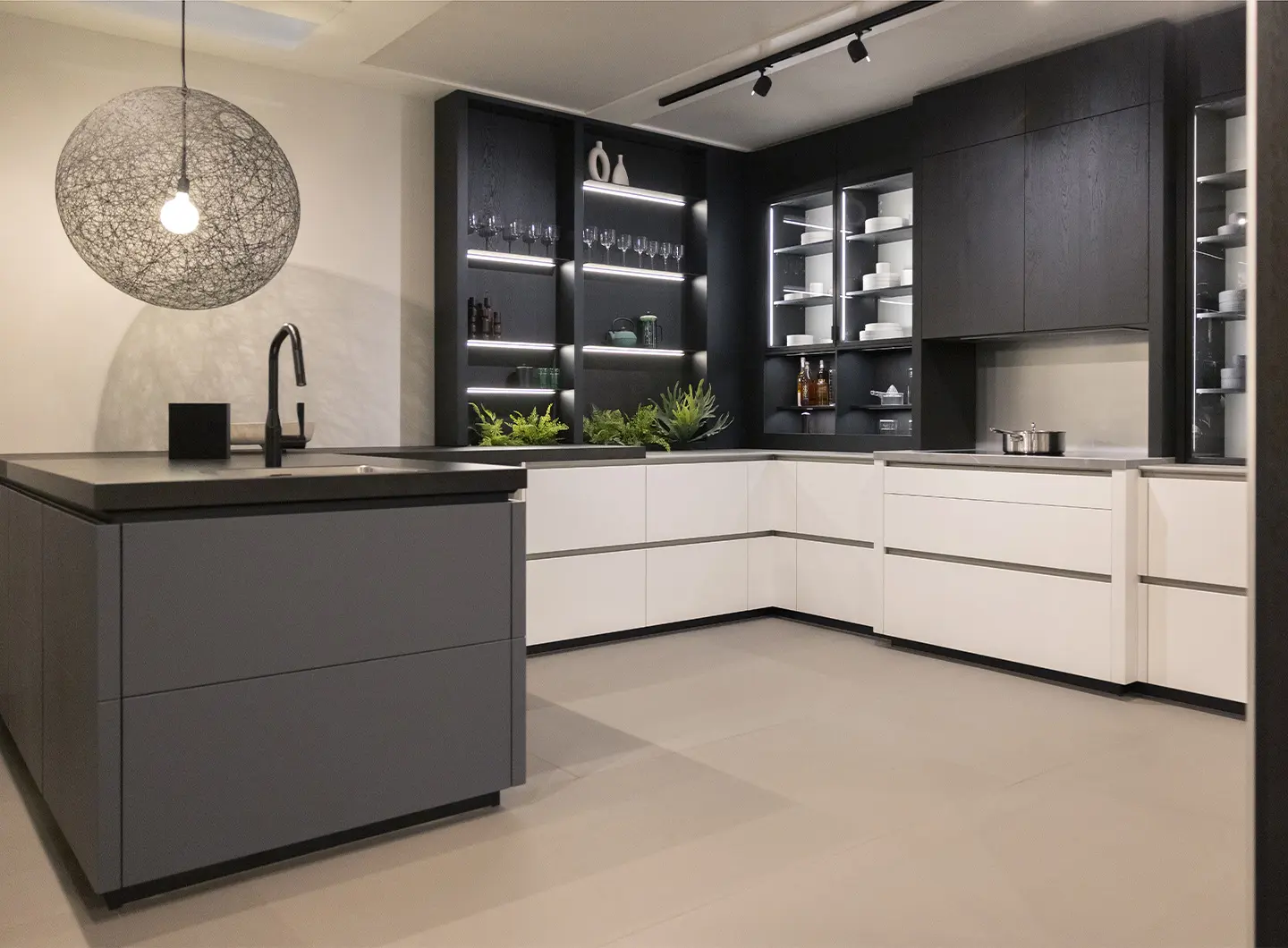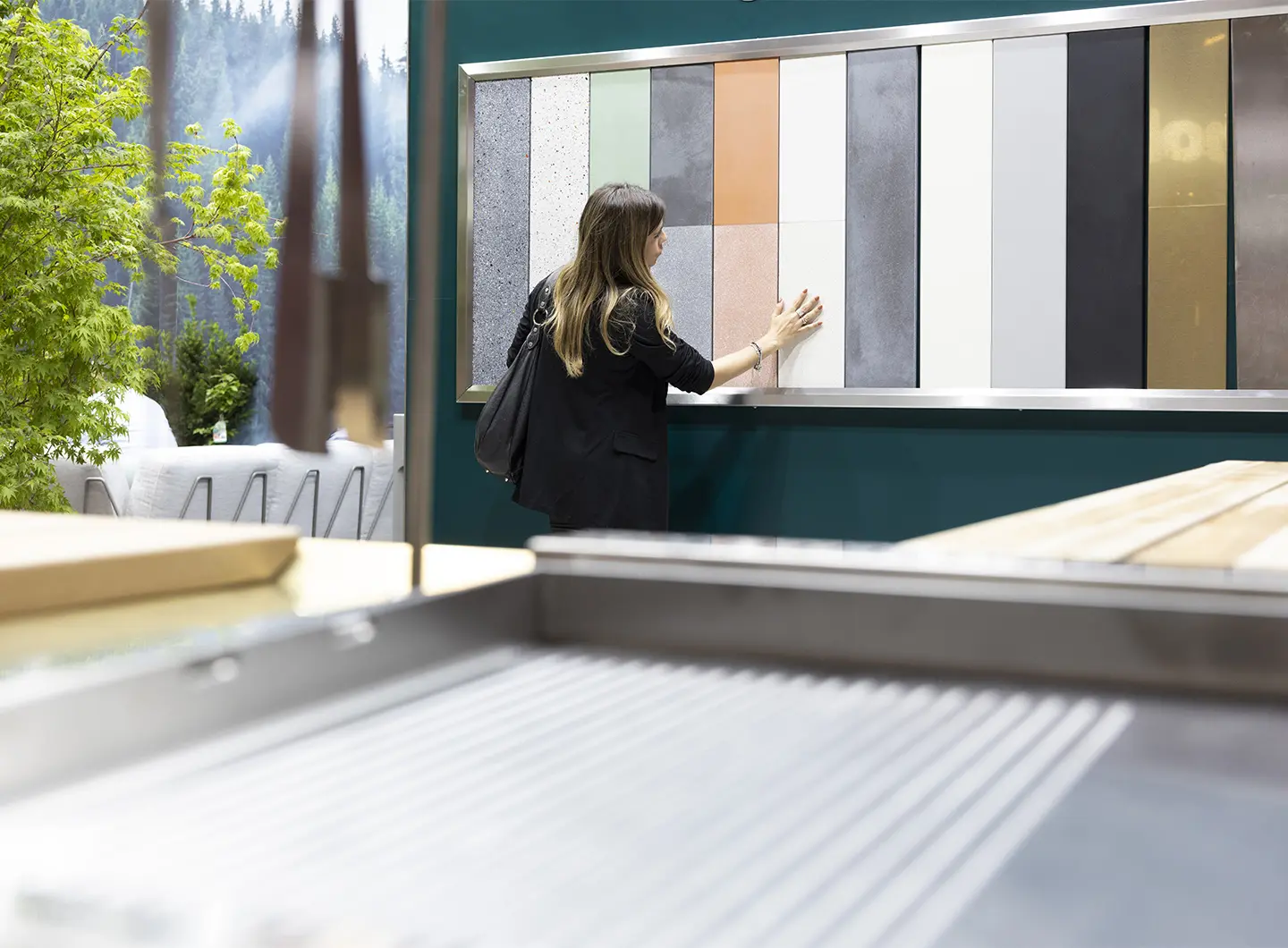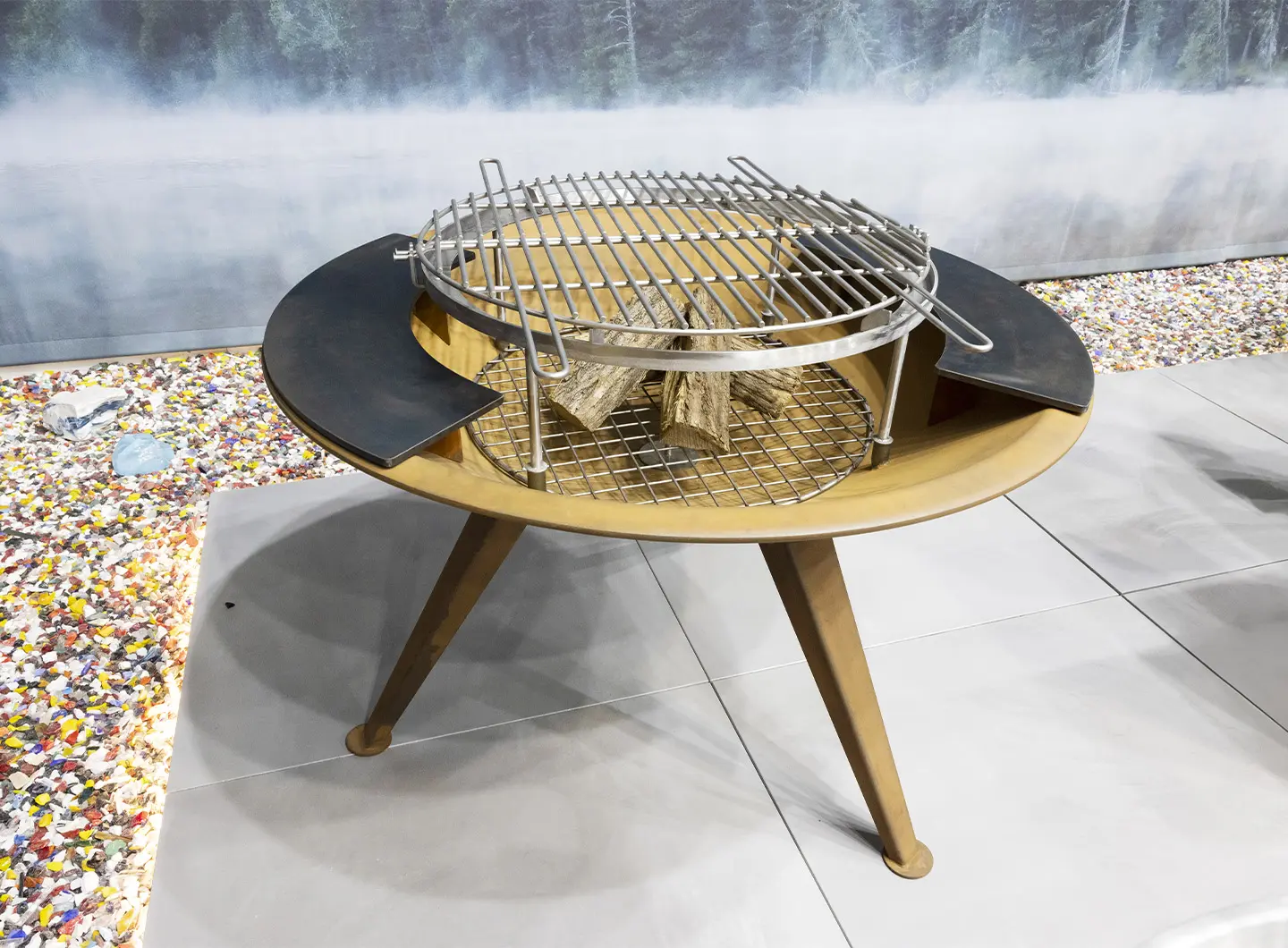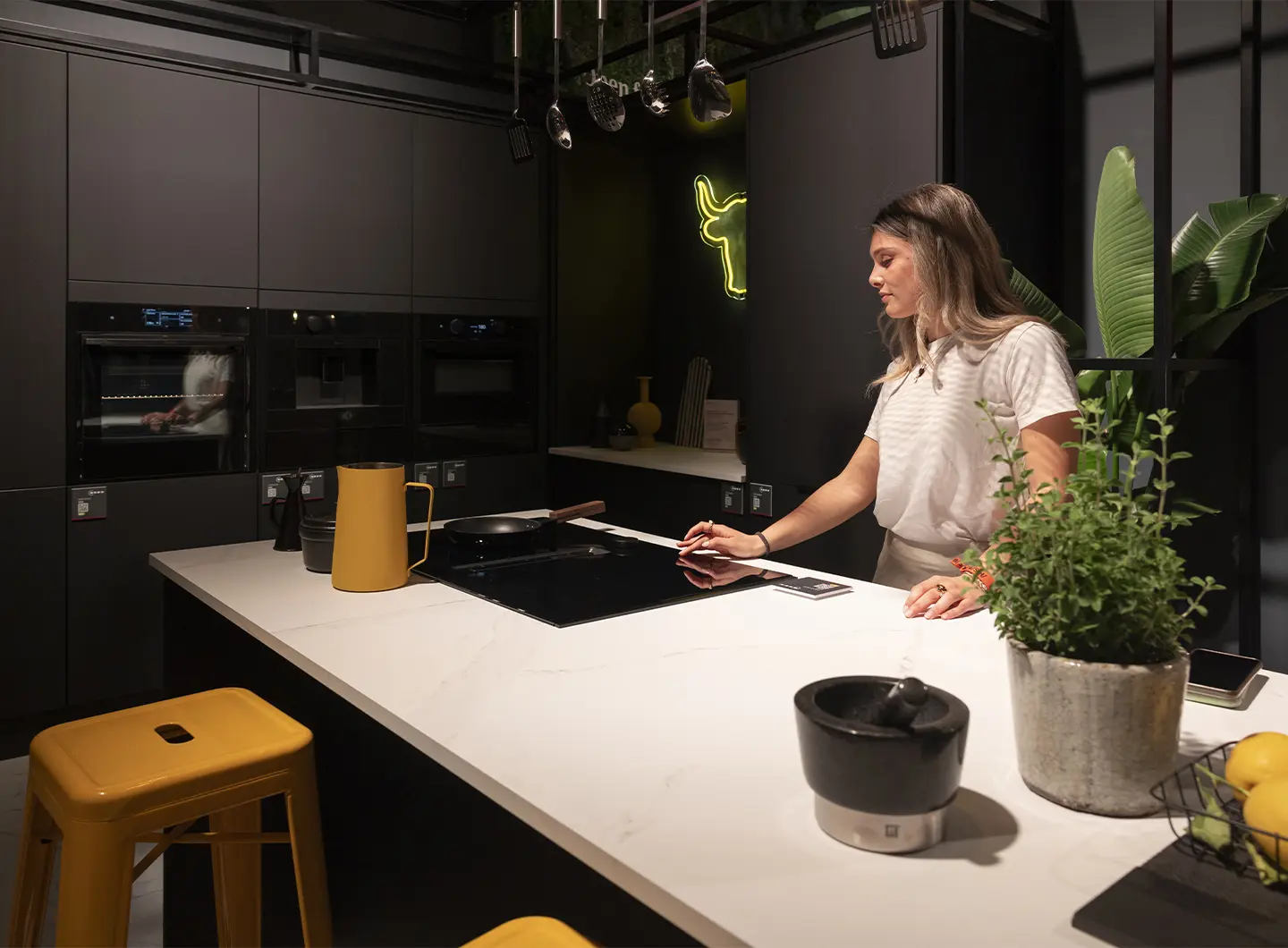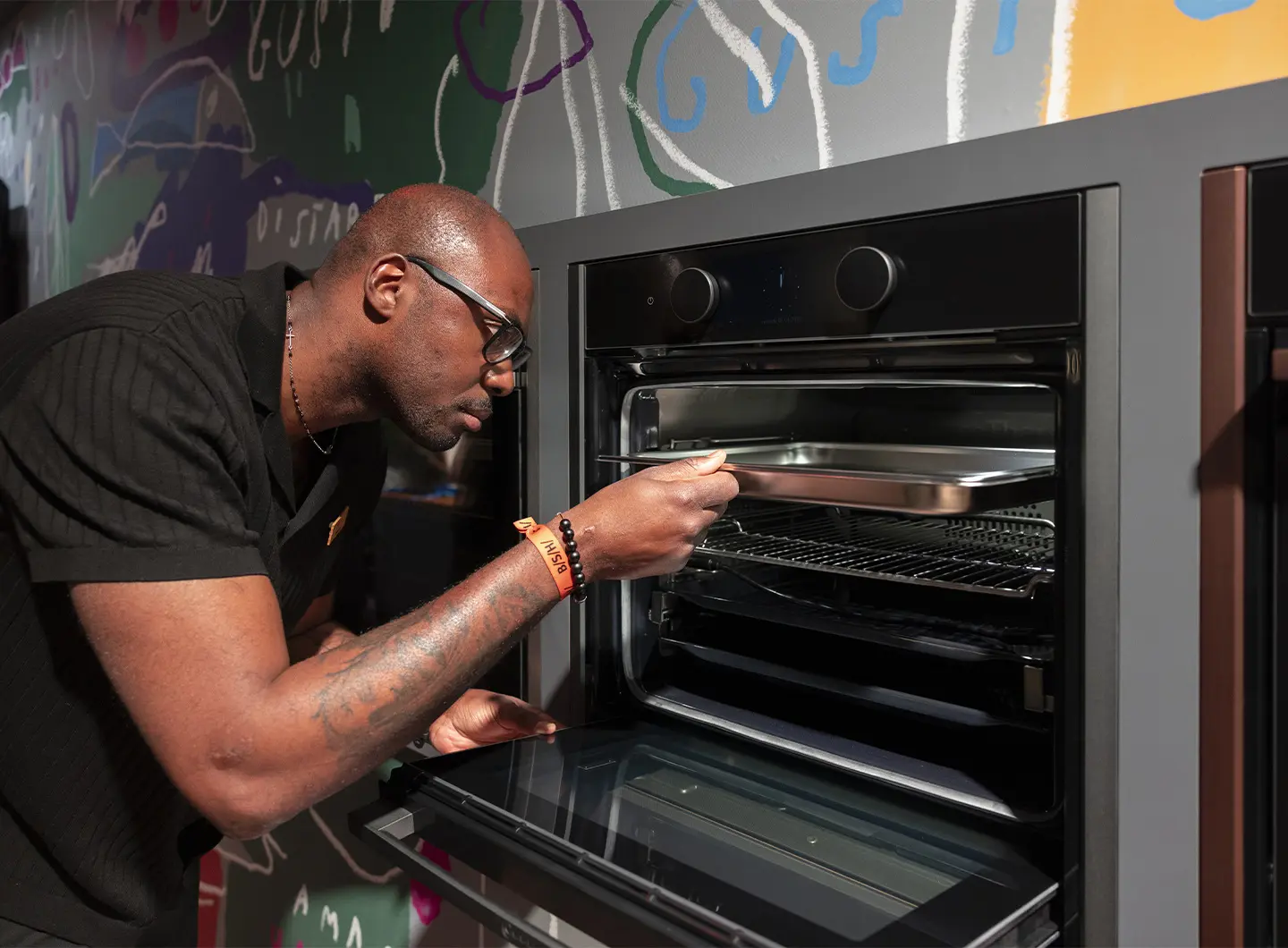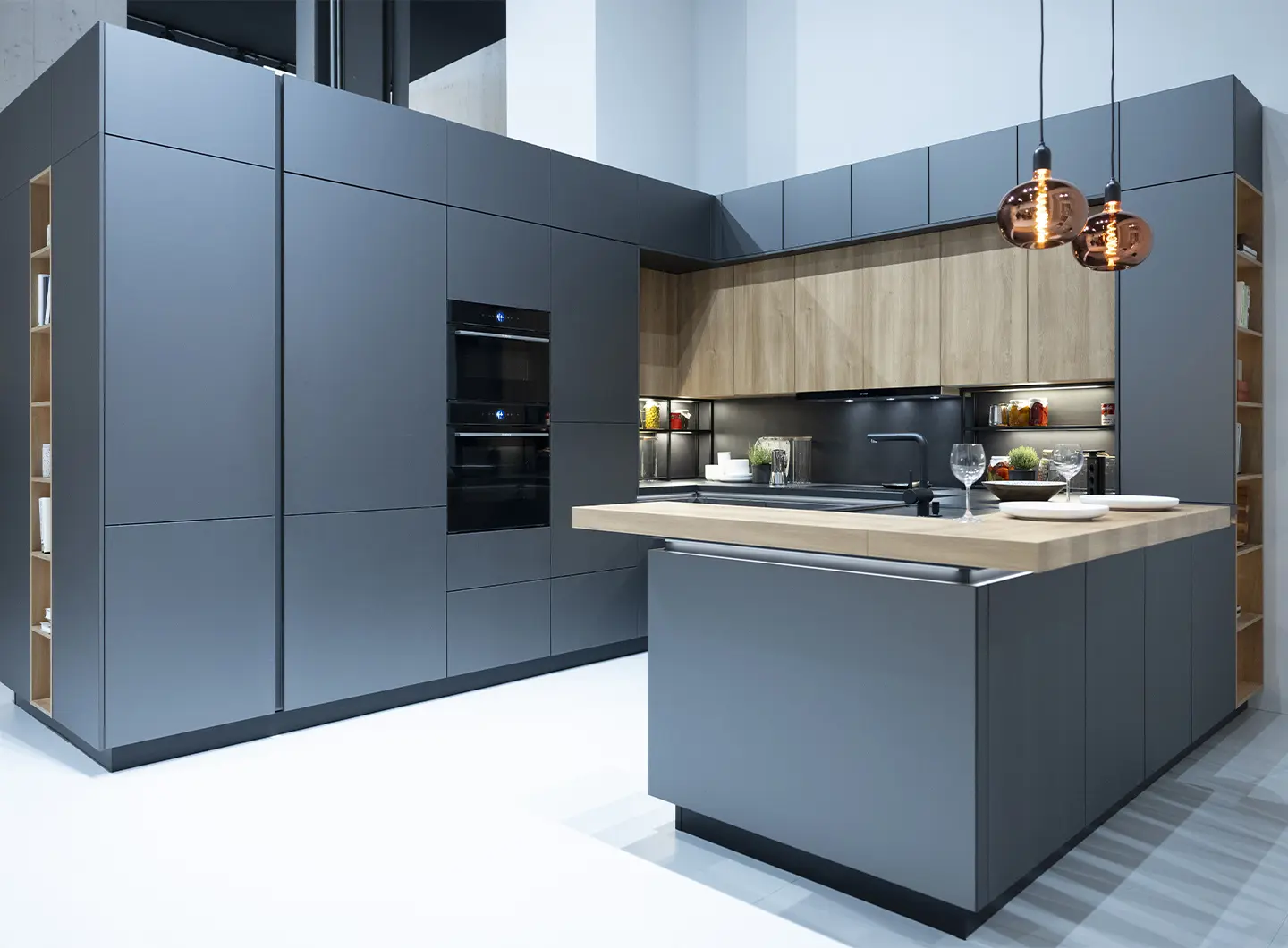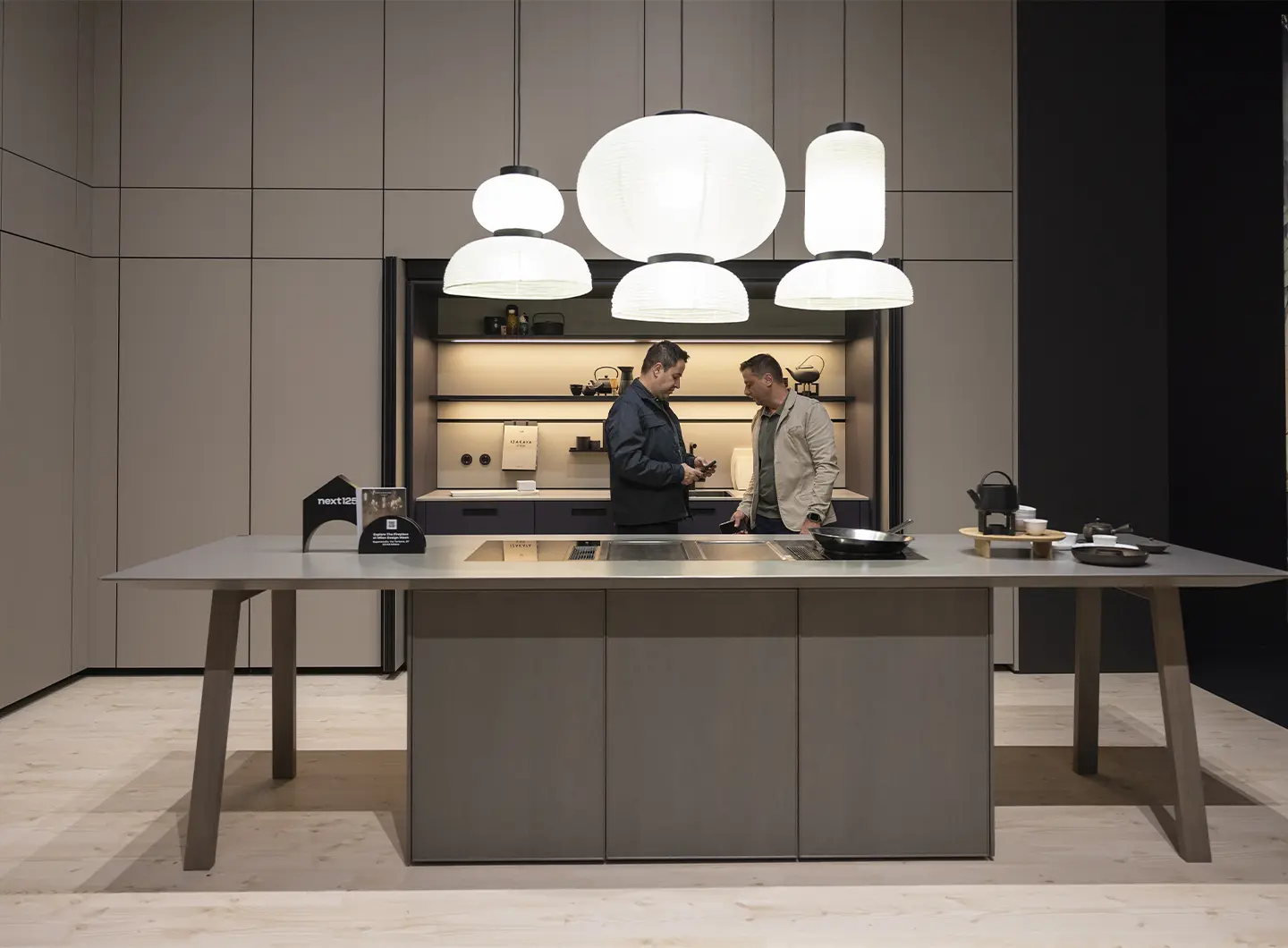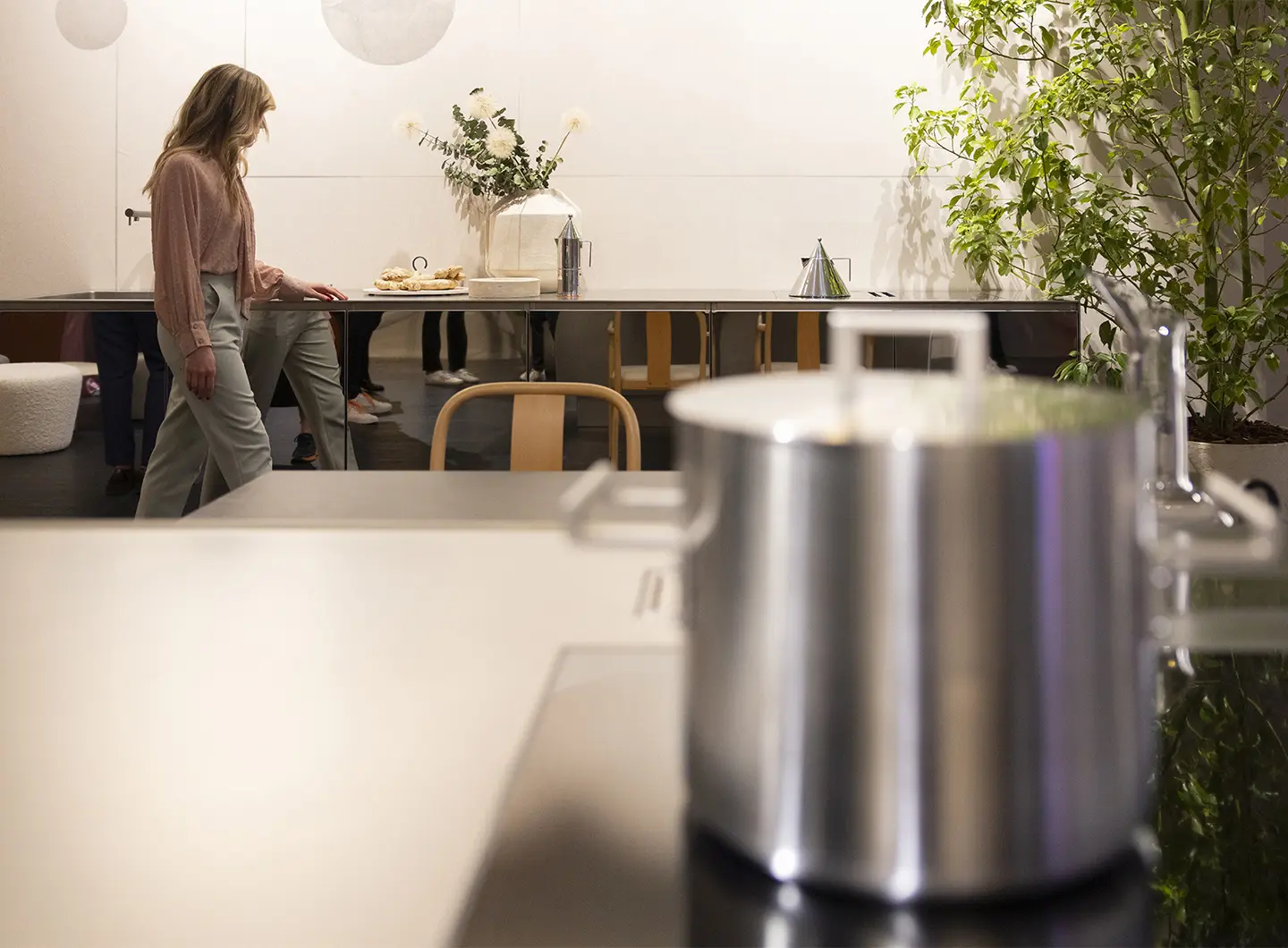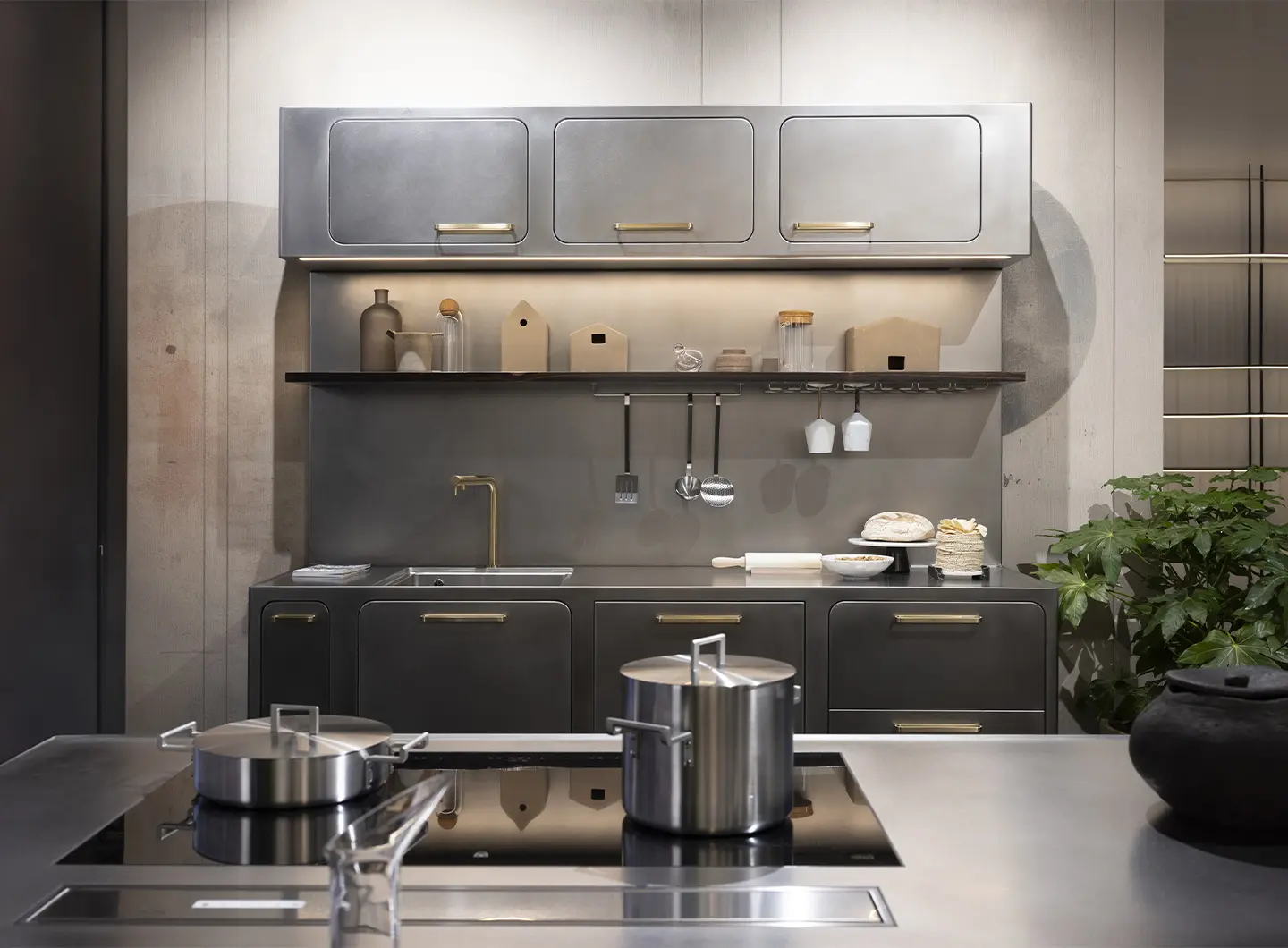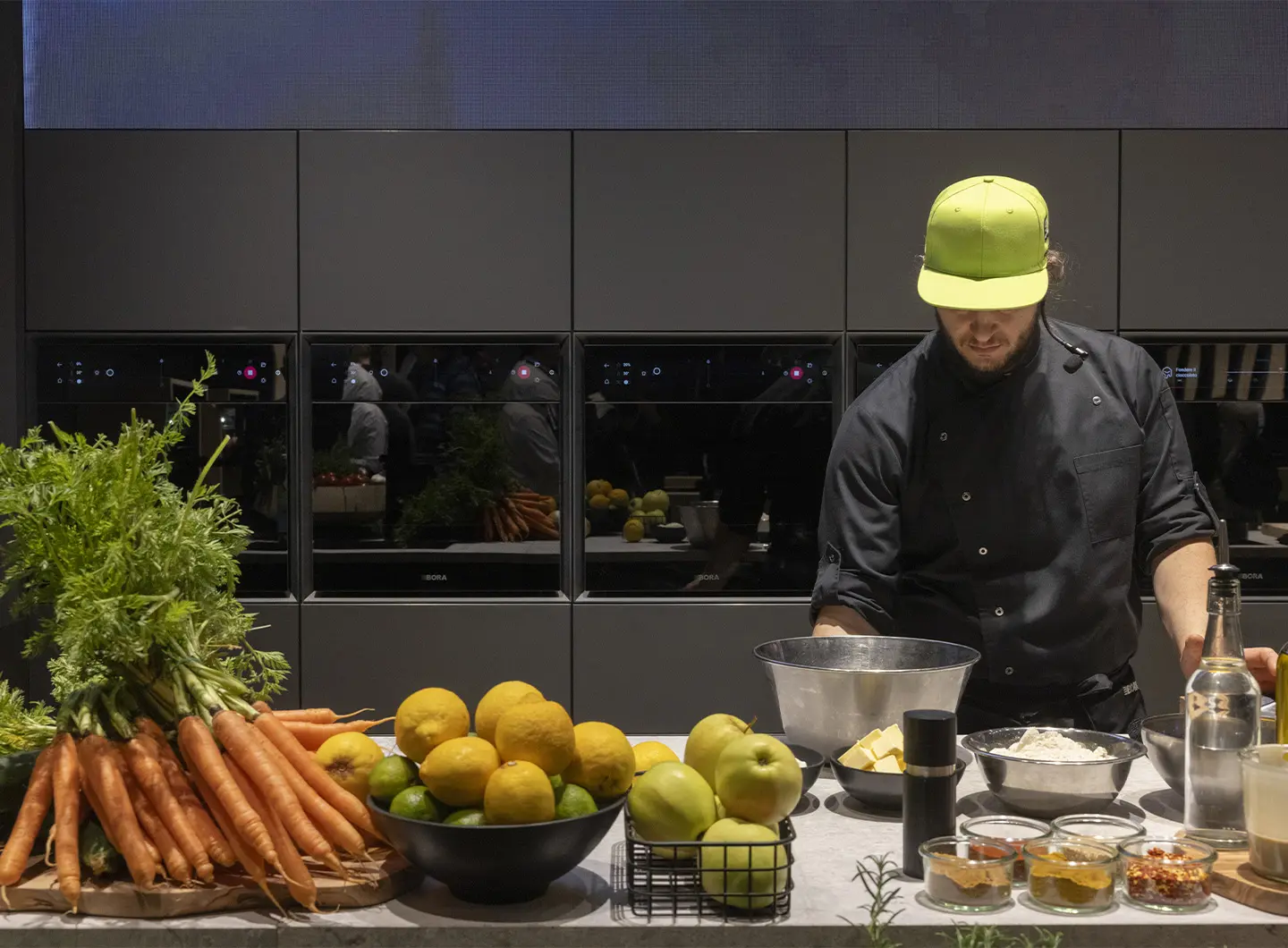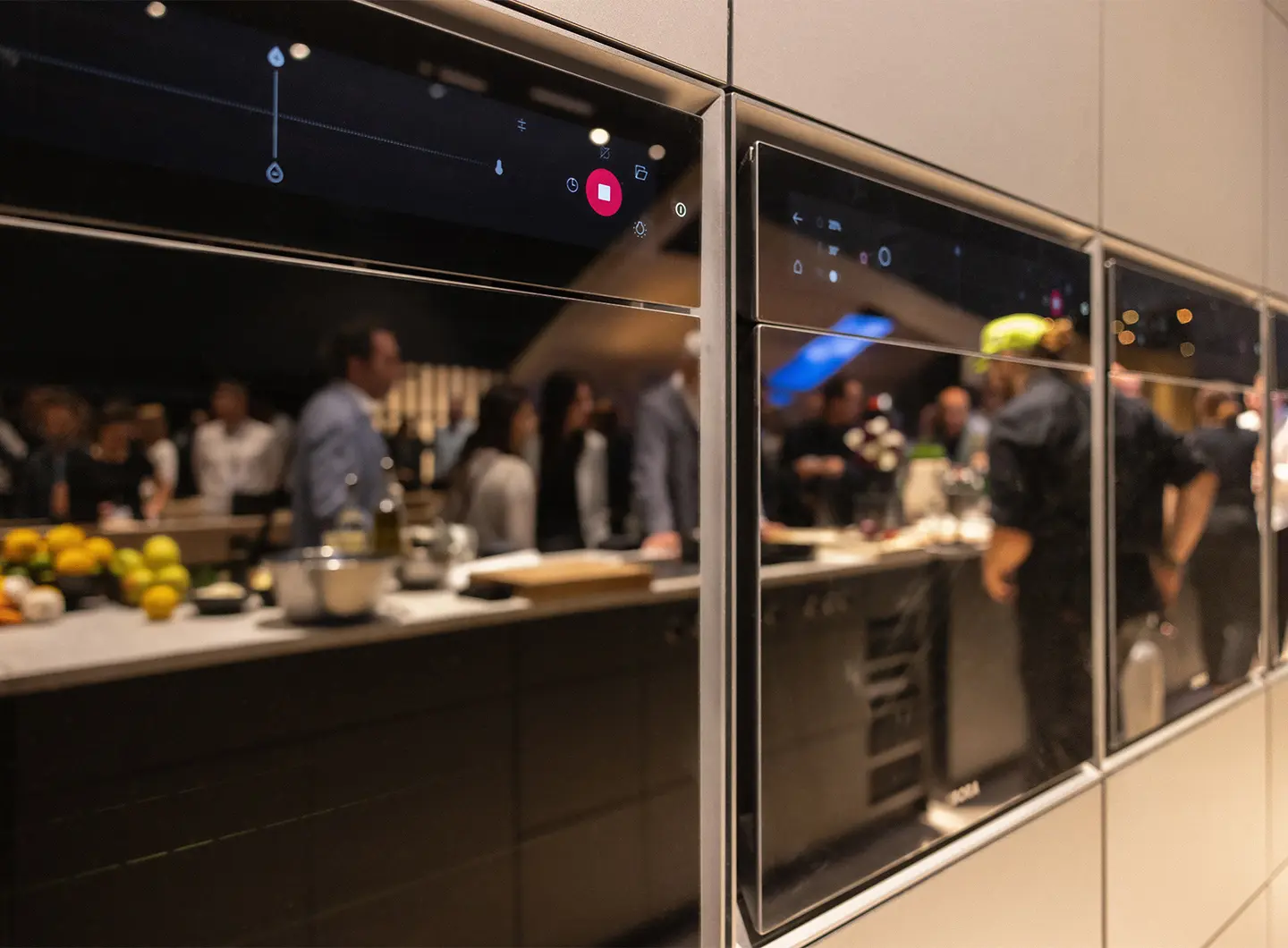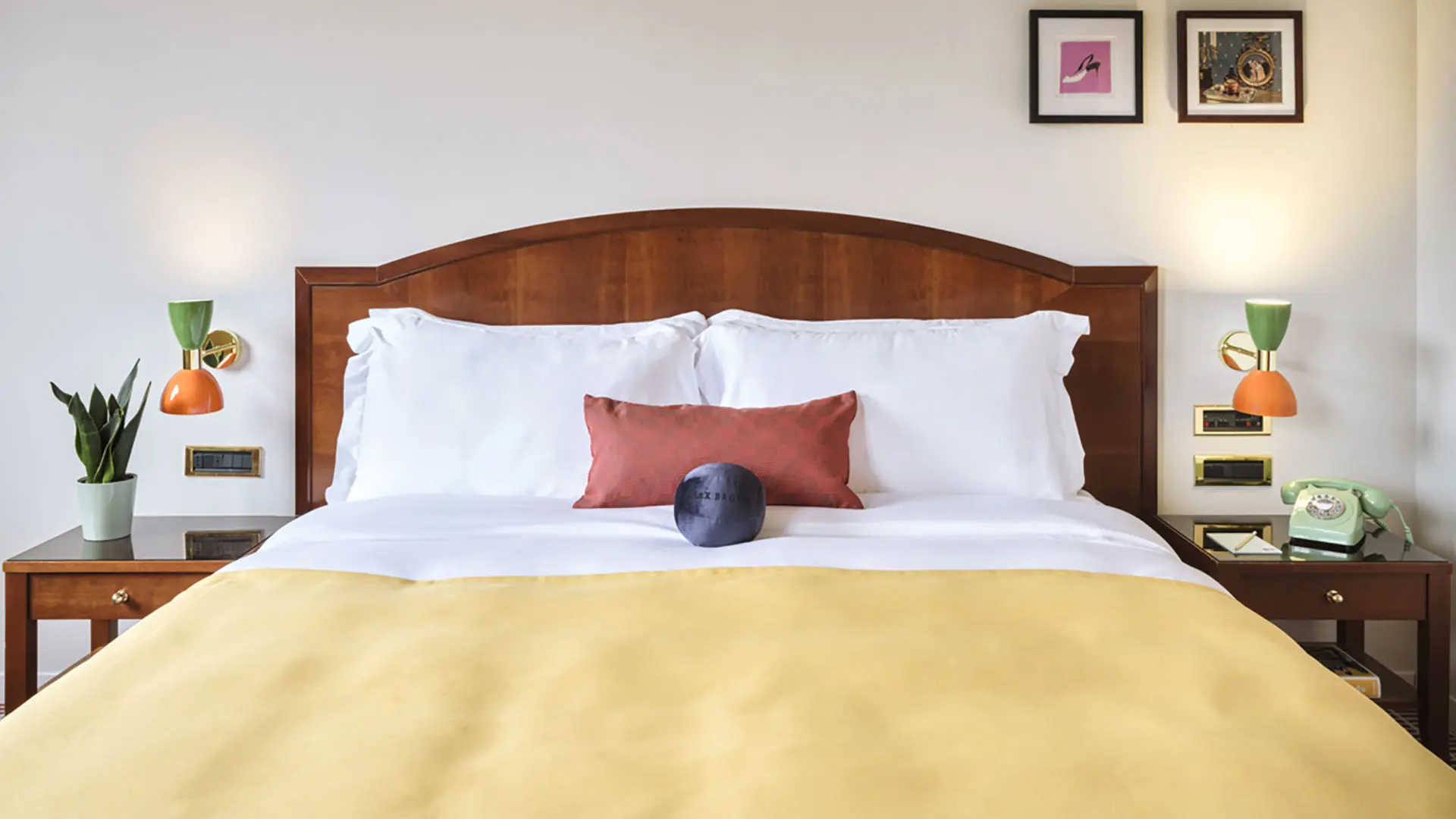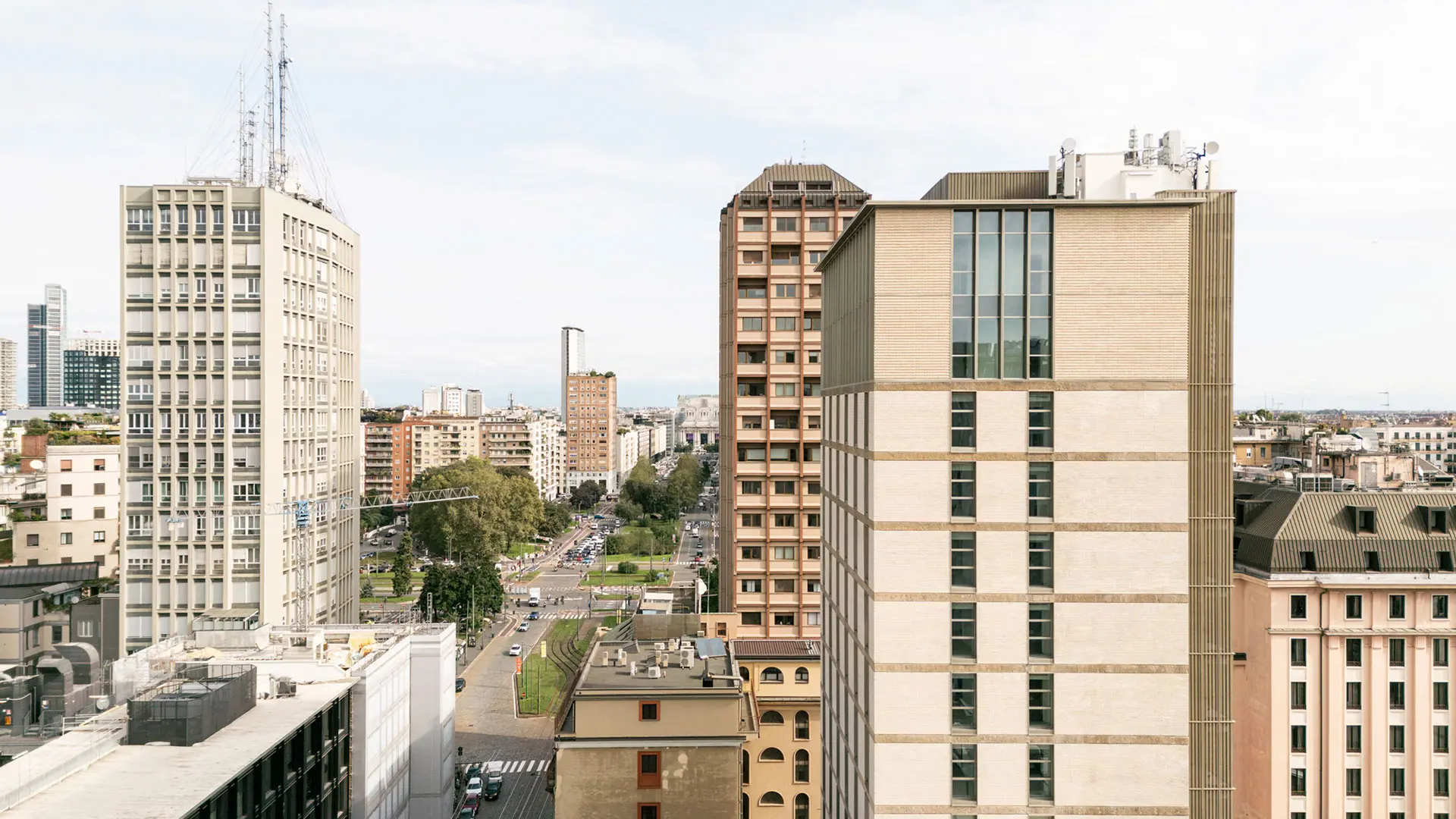In partnership with MiCodmc, a selection of establishments ripe for discovery during the 63rd edition of the Salone del Mobile.Milano, from 8th to 13th April
Food, materials and technology: the protagonists of EuroCucina 2024
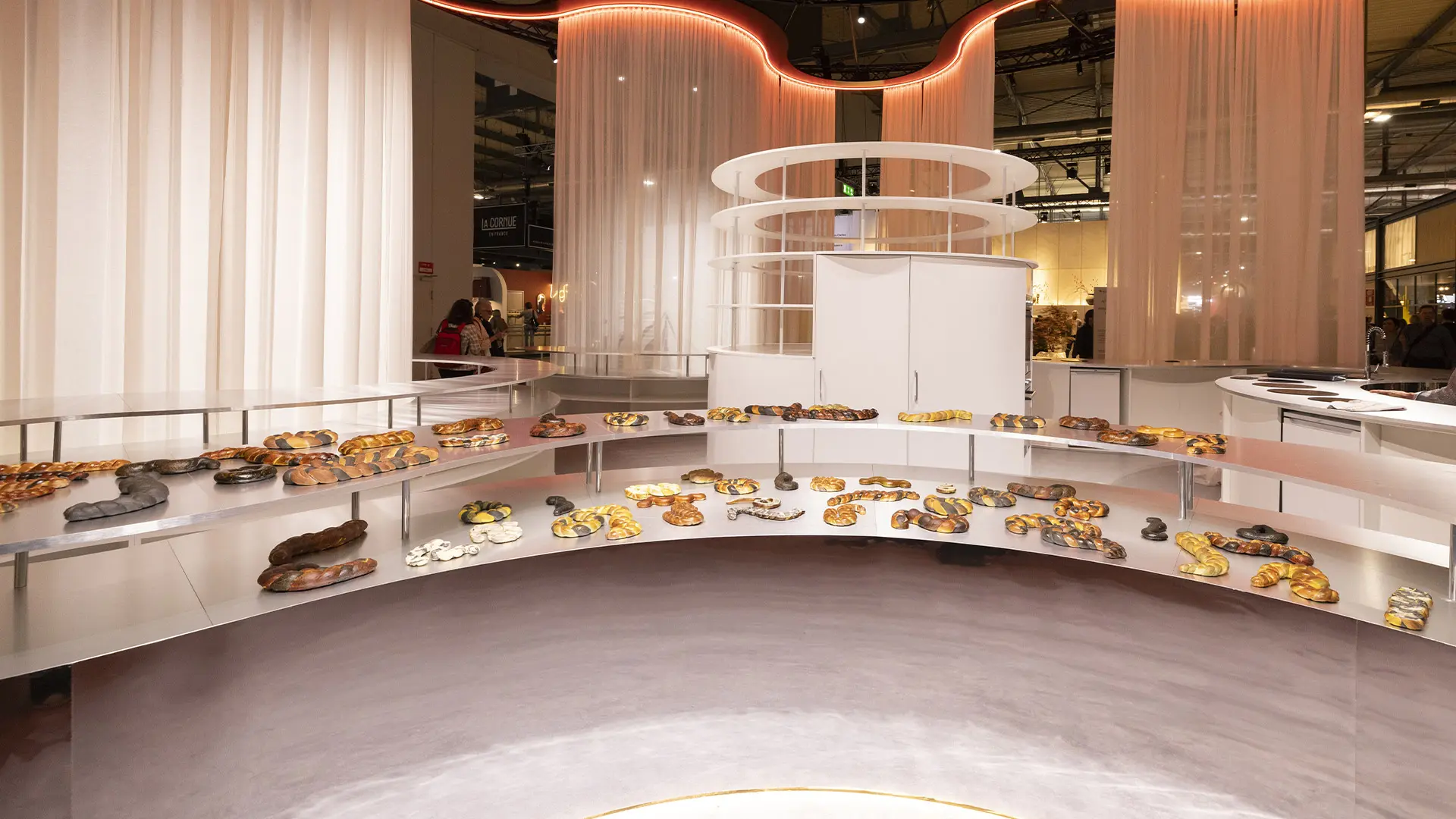
Family Style, Food Design Arena - Ph. Diego Ravier
A story that rivets attention and brings innovation and food for thought about space in the kitchen and food. On display in pavilions 2 and 4
The kitchen today becomes a centre for experimentation. It is now the realm of technology applied not only in the digital field but also to the search for innovative materials, finishes, and design solutions.
And it is the kitchen that is the centrepiece this year at the Salone del Mobile,Milan. In fact, for its 62nd edition, the exhibition is hosting the biennial EuroCucina / FTK, Technology for the Kitchen event, in which more than 100 brands from around the world present the latest innovations for one of the symbolic places of the domestic environment.
Looking at this year’s innovations, most of the products present conduct research into a new concept of the kitchen. An increasingly open kitchen is not intended solely for preparing dishes but as a setting for everyday living enriched with precious materials and outstanding technical performance. The news doesn’t stop at the brands; this year, the Salone del Mobile presents “All You Have Ever Wanted to Know About Food Design in Six Performances” at the centre of EuroCucina, a reflection in six episodes on the food of yesterday, today and tomorrow.
Food and cultures on stage
“All You Have Ever Wanted to Know About Food Design in Six Performances”: already in the title we find the theme that will enliven the central space of the pavilions devoted to EuroCucina during the days of the event.
Six international food magazines mix excellently with artists, designers and chefs to present performances and experiences that put food-related themes at the centre.
Six different viewpoints will reflect on the theme of food, the urgencies, the specifics, and the processes and activities linked to a material as ancient as the history of humanity. Food becomes material design, the vehicle of social relationships, conviviality, experiences and history, traditions and relationships.
Bread, a staple and highly ancestral food, is the protagonist of Objects of Affection, a story from Family Style magazine at its debut, which asked chef Sophie Roe to interpret the concept of affection, tradition and belonging. The same reflections were entrusted to Studio Drift, who for the occasion created a specially designed artefact for the cover of the magazine’s first issue, reflecting on the materials that make up the objects that accompany us every day in our lives as if they were ingredients.
Francesca Sarti / Arabeschi di latte, paired with the British magazine Linseed Journal, proposes an experience linked to creating dorodango, the Japanese art of modelling clay to make beautiful glossy spheres. Visitors are asked to use raw materials such as grease and mud, in which nuts and flower seeds, cereals, minerals and compost are all mixed together, so helping the planet in different ways. A meditative act that leads to reflection on our relationship with nature.
The Austrian magazine The Preserve Journal, together with the Belgian artist Grace Gloria, proposes a profound reflection on the concept of degrowth through an experience made up of participatory gestures such as preparing pasta dough, barley or dolmades. This concept is closely linked to current systems of mass food production, which can instead be replaced by systems that are more respectful and closer to the land and nature.
The Korean Magazine F, through its collaboration with the chef Bobby Cortez and the words of Christopher Mascis (US distributor of the magazine), offers a reflection on three critical concepts related to food: starting from the origin, that is, how food is cultivated and produced, we will then move on to transformation, discussing how history, economy and culture influence food. Finally, we come to consumption and how preparation and tasting techniques reflect human and social behaviour.
The Portuguese of Farta, with their mission to talk about the lesser known and appreciated dishes of Portuguese cuisine, but with close ties to history and the land, present Projecto Matéria and chef João Rodrigues in a performance that revolves around the preparation of Cozido à Portuguesa. Starting from a dish firmly rooted in Portuguese culture, they describe a region and offer a reflection on raw materials and gestures.
Finally, the performance of the Italian magazine L’integrale with the artist Luca Trevisani and the chef/writer Tommaso Melilli is oriented towards the future and highly speculative. What will we eat from the future sea in which perhaps no more fish will be caught? From this question arises the experience and the installation, which tells of a future in which algae, stones and invasive species will be the raw materials to extract broths, gravies and flavours to recall the taste of the sea.
EuroCucina 2024: between materials and technologies
Two major themes are present at this year’s edition of EuroCucina: technology and materials. The first simplifies operations, helps prepare and preserve food, and offers miniaturisation, minimal dimensions and space-saving surfaces.
An example? Elica, in its spaces designed by Calvi Brambilla, presents Lhove with an “all in one” kitchen, in which it inserts the maximum technology available to create an absolute novelty on the market, a single appliance that combines a cooktop, oven and hood.
Bora applies vacuum technology to Qvac. A system directly integrated and recessed into the worktop that allows for the preservation of food and drinks, as well as a marinating process in ten minutes rather than hours. Neff upends the UX in its products. In addition to having an integrated full touch screen, the N50/70 ovens can be controlled through magnetic knobs that can be attached or removed to use them on the cooktops, using gestures customary in the kitchen. Furthermore, the whole range of appliances can be controlled via an app.
In addition to adding refrigerators and dishwashers to its range of products, Barazza presents Icon in its ovens: when filled with water, it enables you to easily clean the oven with the steam produced.
Next to the technology are the materials, a continuous and tireless search to achieve perfection, luxury and outstanding technical performance.
Eggersmann presents Skywalk, a monolith that appears to have landed from space but possesses the finest of Earth’s materials. An island kitchen where bronze and quartzite meet in an object that seems to float.
In its colour variations, Stoneware becomes the protagonist of Binova hobs;in the new version of Bluna does away with hotplates and uses an induction system directly integrated into the material. So no more hobs, but just one single-material base.
Prisma presents itself at EuroCucina with the Abimis brand, which also applies the design and material research of its professional and naval kitchens to the home. High-performance stainless steel is the key feature of Atria, the kitchen devoted to the art of mixology.
Metalco, a famous company specializing in street furniture, presents itself with Outerra, a brand specializing in outdoor kitchens made of high-performance UHPC concrete that skilfully combines inert and recycled materials such as glass from Murano. Dafne and Venere are the company’s two products; the first is a large kitchen that upends the theme of outdoor food preparation, and the second is a round kitchen equipped with swivel wheels enabling it to be moved anywhere.
Schüller, with its premium brand Next125, presents a collaboration with the architect Francis Kéré from Burkina Faso, who designed NX904/914, an island kitchen in which the bronze-coloured mirrored glass of the base makes the volumes disappear and expands the space.


 Exhibitions
Exhibitions
